Exactly What to Do in Florence (For First Timers)
Florence, similar to Venice, has a bit of a reputation for being packed full of tourists – many of whom are only in town for a day – all milling about to see the same three sights, eating at the same few restaurants (that aren’t particularly Florentine or Tuscan), and leaving.
To be honest, on our most recent trip to Florence together (Matt has been twice since without Alysha), Alysha was reluctant to spend any time at all in Florence after visiting previously at the height of summer and finding it too crowded and hot (which is, admittedly, fairly common in July and August).
However, after some convincing, we decided to spend the better part of a week in the Tuscan capital, and that opinion was completely changed by the end of our stay.
While she is still a Roman at heart, having lived there for six months, she is now able to get past the “touristy” façade of Florence (which Rome also has) and see what makes it a special place to visit.
What we found below Florence’s beautiful surface is a city rich in history, architecture, food and drink, and natural beauty that is a fantastic place to explore in its own right, and also makes a stellar home base for exploring the surrounding regions.
And, look, we get it. When you visit Florence for the first time, you’re definitely going to want to see the main sights that everyone talks about.
For us, the list of those sights goes something like this: the Duomo di Firenze (also known as the Cattedrale di Santa Maria del Fiore), the Uffizi Gallery (a deep dive into Renaissance art), and the Galleria dell’Accademia di Firenze (home of the famous statue of David).
The thing we want to make super duper clear is that we think that shouldn’t be the only thing you do while you’re in Florence.
We also think it’s important to consider how you want to experience each of the main sights.
Which is why we have detailed guides below that include our recommendations on how best to tackle each sight to get the most from the experience.
In this guide to what to do in Florence, we’re not going to give you a list of every single museum, park, square, and church that you could possibly see in Florence.
Instead, we’ll offer you a blend of the main attractions in Florence – what they are, some brief historical context, and how to see them. We’ll also give you some of our other favorite things to do in Florence all based on our own personal experiences exploring the city.
Armed with that (and our guide to planning a Florence itinerary), you’ll be ready to plan a trip that will go a level deeper than most and learn about the different aspects of Florence’s history and culture that have shaped the city as we know it today over the many centuries it has been in existence.
Learning is our favorite part of travel, which you’ll probably realize as you read this guide.
Sound good to you? Let’s get into it.
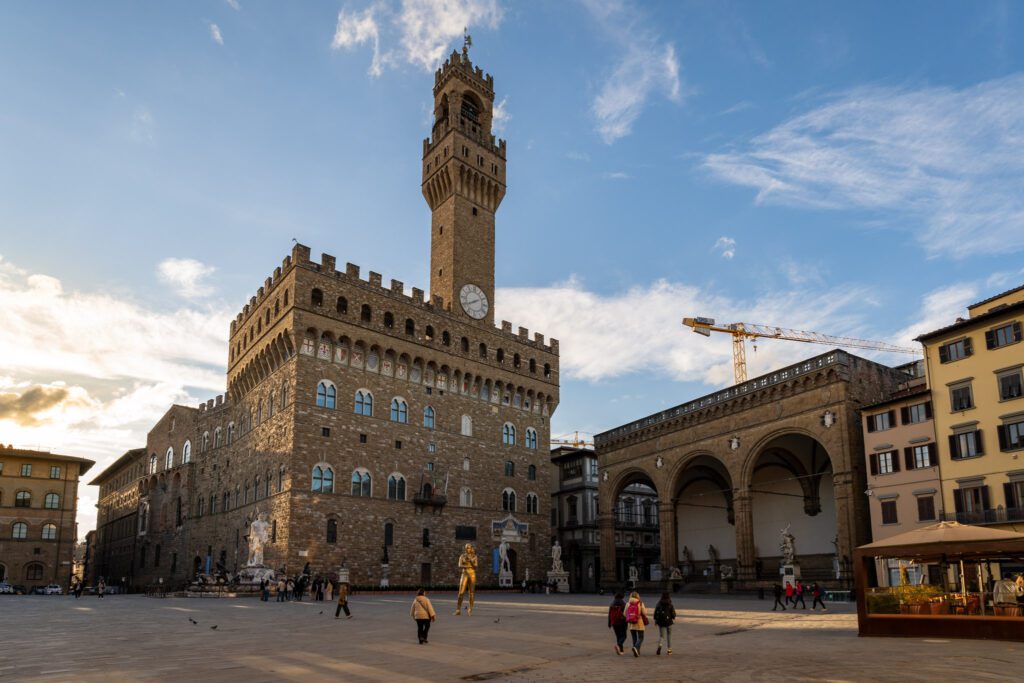
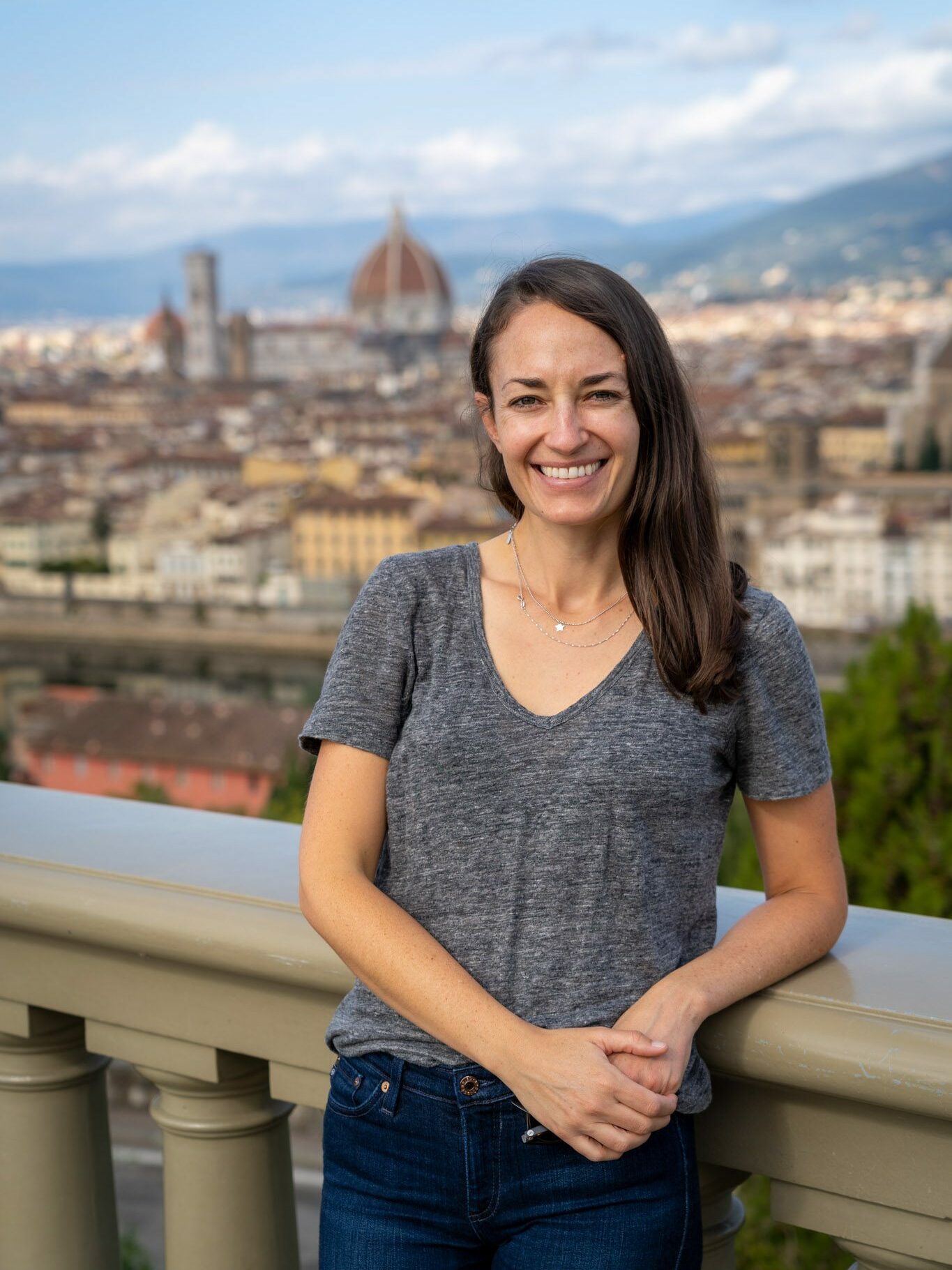
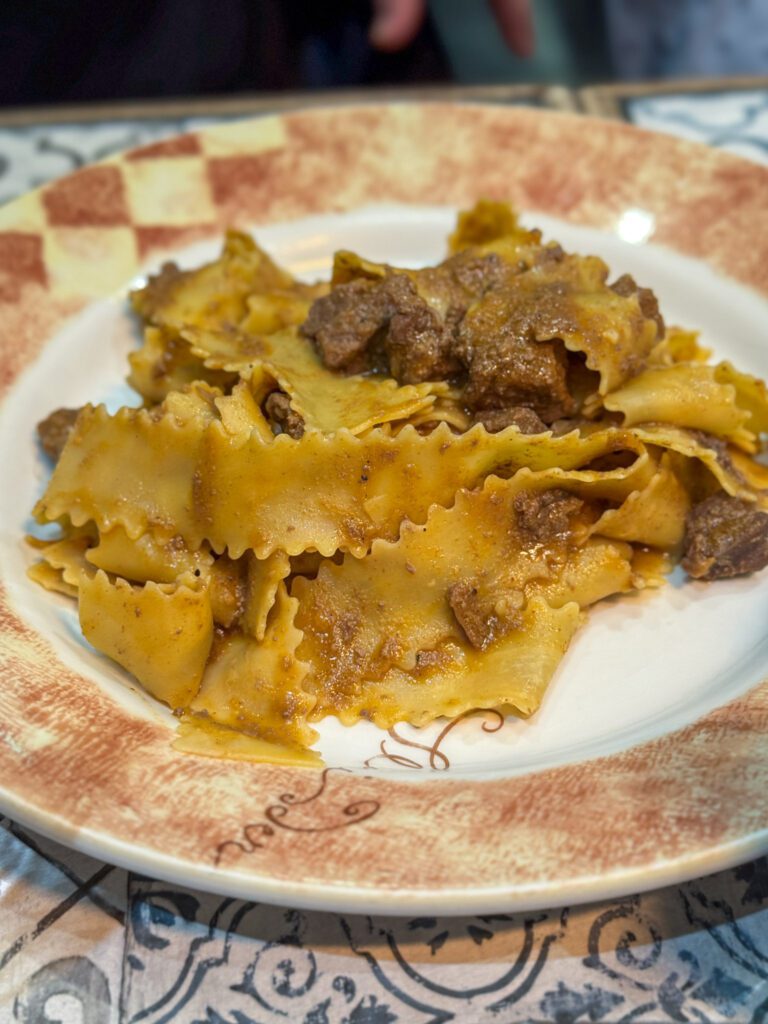
Disclaimer: Some of the links in this post, like hotel links, are affiliate links, meaning at no additional cost to you, we make a little bit of money if you click through and book. That being said, we would never recommend something to you that we don’t stand behind 100%.
Marvel at the Duomo di Firenze
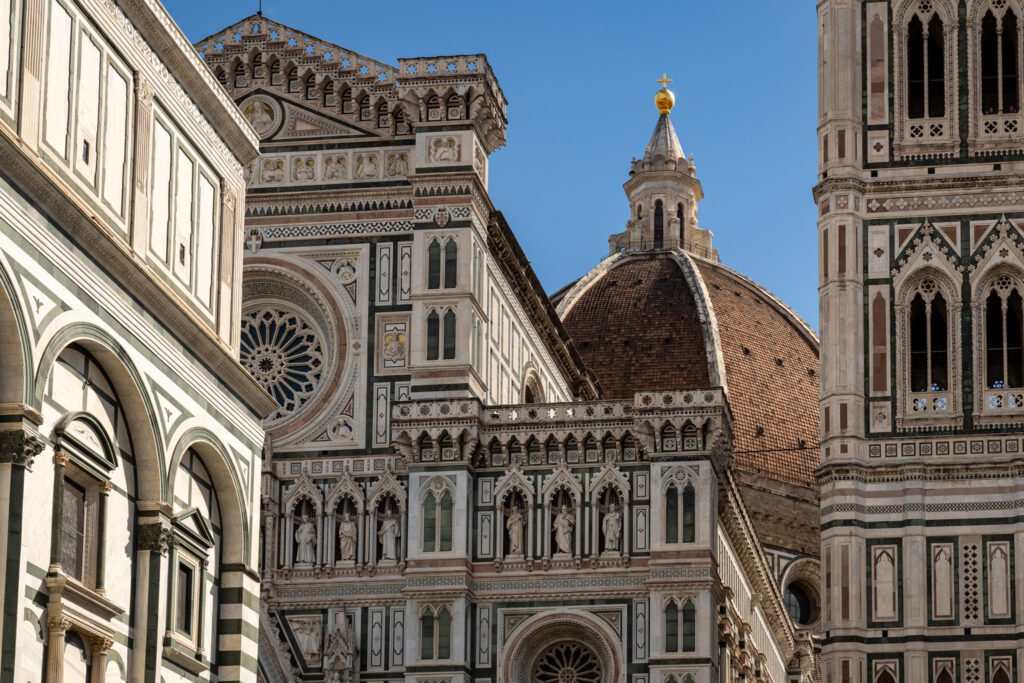
Florence’s Duomo – the Cathedral of Santa Maria del Fiore – is a spectacular piece of art and architecture, and is very much the centerpiece of Florence’s historic center.
Your first glimpse of the multi-colored façade and the red bricks of the dome as you come around a corner in the center is sure to have your jaw hitting the floor.
Even after many trips to Florence, I still get chills on that first glimpse.
The first thing you need to know here is that the Duomo is really a complex, with five different pieces that you could visit.
They are the bell tower (the Campanile di Giotto), the Museum, the Baptistery, the church interior, and Brunelleschi’s Dome (which means climbing to the top).
We have thoughts on prioritization in a second.
The key here, though, is that our favorite thing to do is to climb the dome, and the only way to do that is to get a ticket that includes every piece of the complex (it’s good for three days after you climb the dome – more on specifics below).
Which means that, if you have the time, you can actually visit all of them (and spend as much or as little time as you want).
If you have limited time, we think your main focuses should be climbing the dome (clearly priority number one) and the baptistery (unfortunately, the mosaics covering the ceiling, the main draw, are under renovation for the next several years).
If you have more time after you’ve done those, add the Museum next, where you can see a bunch of original pieces (like the doors of the baptistery), followed by the Campanile (the bell tower).
The interior of the cathedral is cool, sure. It’s a cavernous space with a beautiful altar, but because it’s free, the line to get in can take a long time and we’d actually recommend skipping it and going inside one of Florence’s other churches instead, which was an unexpected delight on my latest trip to Florence (more on this in a dedicated section below).
Plus, the best part of the interior is BY FAR the art on the interior of the dome, and if you climb the dome you end up on a walkway right under the dome and get an up-close-and-personal view.
If you are interested in visiting all of the attractions on Piazza del Duomo, you’ll save both time and money by purchasing a combined Duomo complex ticket (as we mentioned, this is the ticket you need for the dome anyway).
You could also book a guided tour of the Duomo complex, which will give you more context and history and is also useful if tickets are sold out for your dates.
Here are the opening times for key attractions on Piazza del Duomo:
- Campanile: 8:15 am to 6:45 pm
- Baptistery: 8:30 am to 10:15 am and 11:15 am to 7:30 pm
- Duomo Museum: 9:00 am to 7:00 pm (closed Sunday afternoons)
- Duomo Interior: 10:00 am to 4:30 pm
- Brunelleschi’s Dome: 8:30 am to 5:00 pm
Climbing Brunelleschi’s Dome
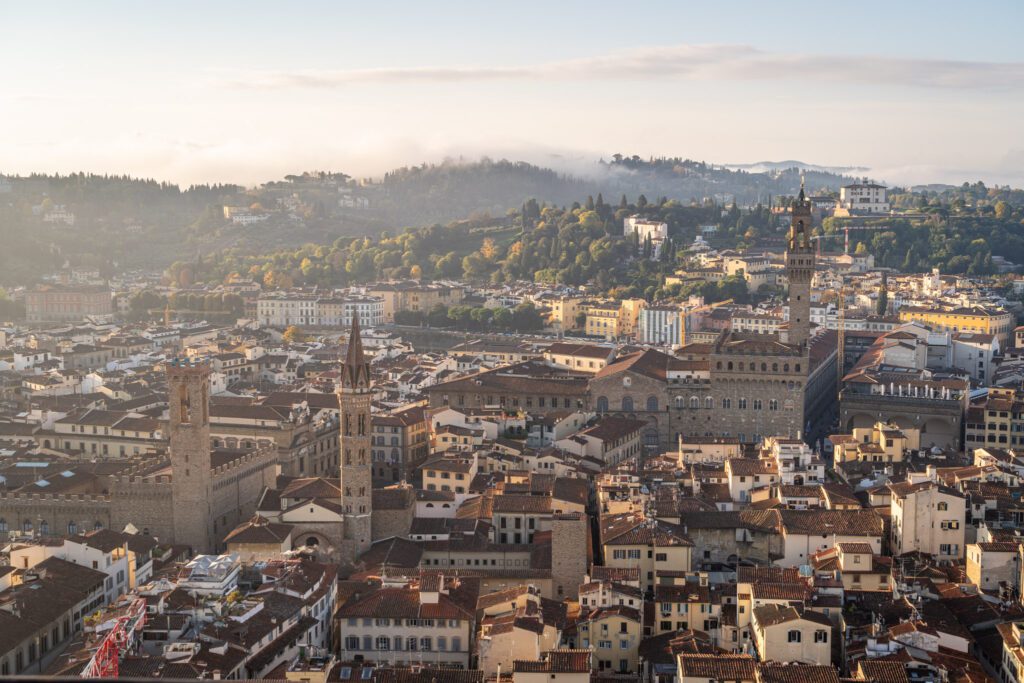
First of all, you MUST book your tickets in advance for this one. It’s not optional.
You have to buy tickets in advance with a specific time slot, which means planning the rest of your itinerary around that timing (really, around the timing of the Duomo climb, the Uffizi Gallery, and the Accademia if you are planning on doing all three).
At €30 a person (€12 for kids 7-14, free under 6), the price is a little steep (so are the stairs) to visit Brunelleschi’s Dome, but it is probably our single favorite attraction in Florence.
I (Matt) have climbed the dome three separate times now, and I will absolutely consider doing it again next time I’m in Florence.
We think the best aspect of the complex is pretty clearly Brunelleschi’s Dome, and we say that for a couple of reasons.
First, the view from atop the dome is pretty spectacular. It gives you a bird’s eye view of the city and surrounding landscape, and is our favorite view in Florence.
Second, the view of the art on the interior of the dome is second to none, because you traverse a passageway along the base of the the inside of the dome to reach the top, which gives you an up close and personal view of the creatures that were created to depict what happens when you get to the Day of Judgement (the event that the art is depicting).
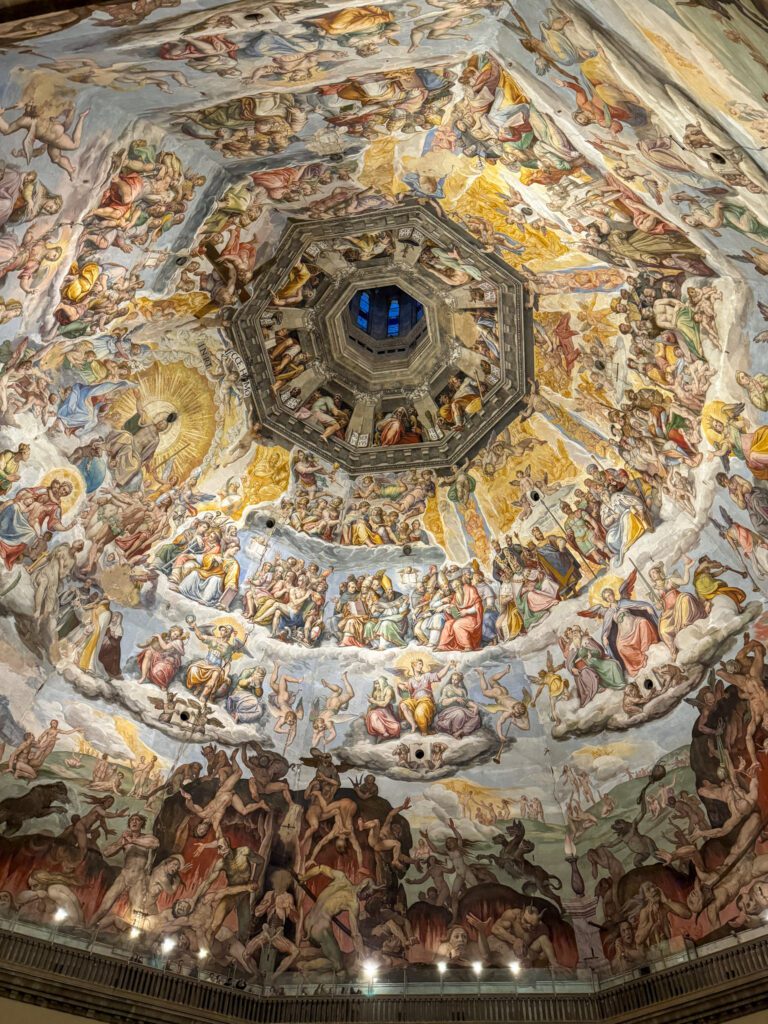
There are depictions of heaven and hell, and some of the figures in the hell portion really make me wonder exactly what drugs artists back then were taking. The imagination that went into creating this piece is truly wild.
Last, but certainly not least, the climb gives you a unique perspective on the construction of the dome.
It’s actually two domes – one outer, one inner – and to get to the top, you climb in between them, which is pretty interesting.
One thing to keep in mind here is that there are parts that are steep, parts that are narrow, parts that are both steep and narrow, and you will likely be sharing the experience with many other people.
This climb involves 463 steps (there is no elevator) and some very narrow passageways, so it’s not for people who are either afraid of heights or claustrophobic.
There’s a point where you are shuffling along a narrow balcony (behind a glass wall, of course, it’s not like you’re at risk of falling) around the base of the dome high above the floor of the church below, which is spectacular.
From there, you can see the details in the art on the interior of the dome, which is worth stopping to admire.
However, by stopping to admire, and everybody else doing the same, you will be standing there, suspended several hundred feet up on a narrow ledge, which isn’t for everyone.
Alysha was a little antsy to be done with it after about five minutes, which is why I’ve included this little blurb. I’m not a fan of heights, but I was totally fine on this one.
If you are scared of heights, claustrophobic, or unable to climb 450+ steps to reach the top of the dome, think twice before you embark on the journey.
We’ve now done this first thing in the morning and at sunset, and would strongly recommend that you do the early morning climb for the best light over Florence and fewer crowds.
Which means you’ll want to buy tickets for the 8:15 am time slot and be in line by 8am.
Again, you must buy your tickets to climb to the Dome in advance, and they will cost €30 (€12 for reduced price tickets, if you qualify).
The website to buy tickets for the Dome is here. You’ll follow that link, click on “Brunelleschi Pass,” then choose a date and time slot and go from there.
We’d really, really urge you to choose a time slot either early in the day (the first available) or late in the day (the last available) for the best light.
There’s something surreal about being atop the dome and seeing the landscape awash in a soft, golden glow of the setting sun (which is really only possible outside of the summer months, when the sun sets earlier).
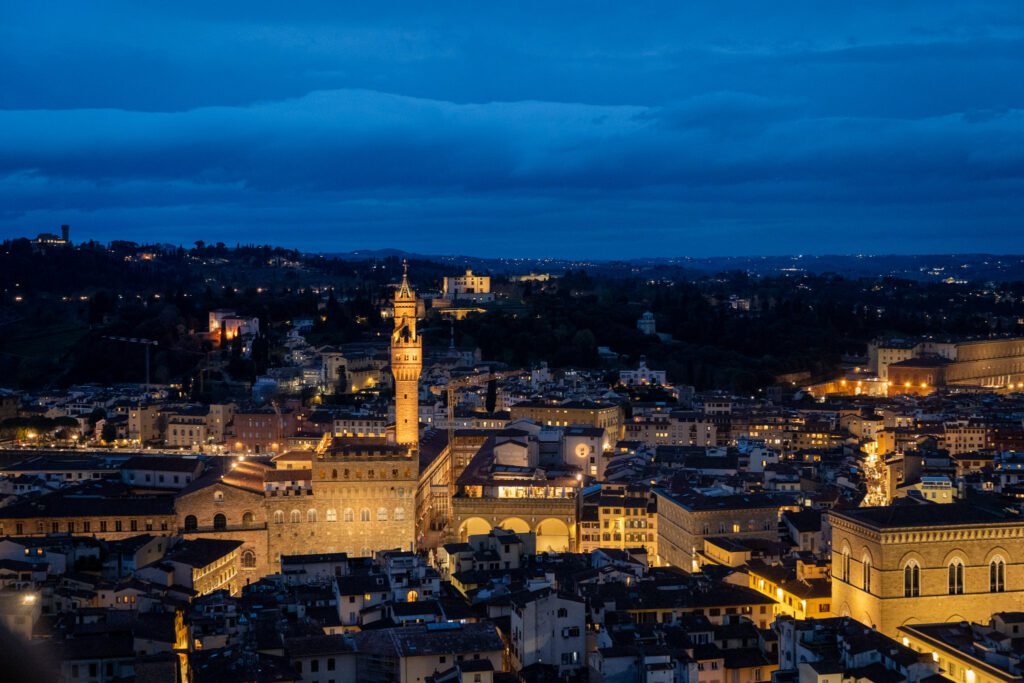
If tickets are sold out for the days you’ll be in Florence, you can still access the Dome by booking a guided tour.
In fact, that might be your only option at that point.
We’d opt for this guided tour, which is two hours long and includes both a climb to the Dome, and a walk around the exterior to learn about the history of the massive cathedral.
The Baptistery
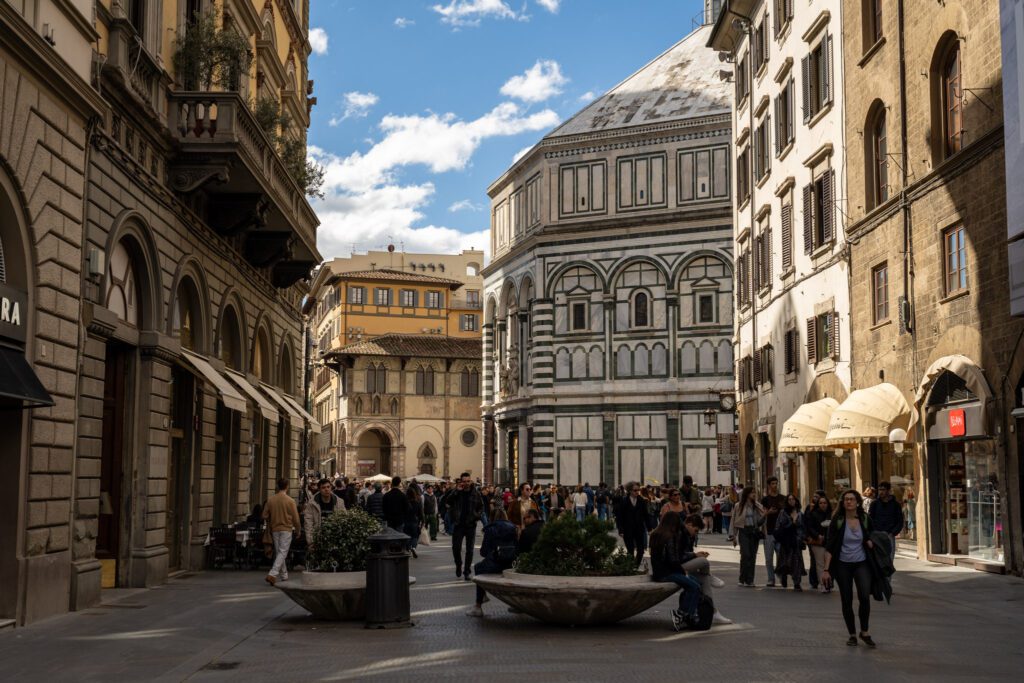
Our second favorite aspect of the complex is clearly the Baptistery and its ornate mosaics covering the ceiling.
This is actually the oldest piece of the complex – it was built before the church, which is unique.
However, you should know (because I didn’t going into my latest trip) that they are currently restoring the mosaics, so they are covered by scaffolding and, therefore, not visible.
The work is going to take years, so it might be worth poking your head inside to check it out, but it shouldn’t take you more than 10 minutes because there’s just not that much to see right now.
We WOULD NOT wait in a long line to get into the Baptistery, at the moment (try going at off-peak hours on a weekday).
It’s also worth taking a look at the doors of the baptistery (located on the side that face the cathedral), which are gorgeous.
Though they are actually a replica – the originals are in the Duomo Museum, which is worth poking your head into (more on that in a second).
The Opera del Duomo Museum
This is the next aspect we’d add if you’re interested in art and architecture, and it’s relatively compact so it shouldn’t take you more than an hour or two.
You can see the original doors of the Baptistery and many of the pieces of art that USED to be inside the cathedral (and no longer are, which is part of the reason why we’d skip the interior).
The highlight here is the ornate gold door made by Ghiberti called The Gate of Paradise – it’s truly spectacular.
Tons of other marble statues, works by famous artists who worked in Florence (like Giotto and Donatello), and more.
Buying Your Tickets for the Dome (and the Complex)
They have three ticket options – Bruneleschi, Giotto, Ghiberti (named after artists who worked on the cathedral) – that include slightly different pieces of the complex.
The high level summary, which we mentioned above, is this: if you want to climb the dome, you’ll need the Brunelleschi pass because that’s the only one that includes the dome climb (it’s also the most expensive).
If you read our descriptions above and decided the dome climb isn’t for you, the Giotto Pass includes the bell tower, Baptistery, and museum, and would be a good option.
The Ghiberti Pass includes the baptistery and museum.
It’s worth noting two things here.
First, you’ll need to book a specific time slot for the dome climb.
All of the other aspects are on a first-come, first-served basis (for those who have tickets), and you can visit them anytime over the three days following the date you select for the dome climb (which we’d put on your first day in Florence and is what we recommend in our Florence itinerary).
Second, the dome climb is very popular and will sell out, so make sure to book well in advance.
The website to buy tickets for the Dome is here. You’ll follow that link, click on the ticket then choose a date and time slot and go from there.
If the dome climb is sold out for your dates, another option is to book a ticket through a reseller, which will be slightly more expensive but might have additional availability (because they book out big blocks of tickets to resell).
You can book those tickets here, which are exactly the same thing – tickets for entry to the Dome and the rest of the complex – but with more availability (usually).
Learn About the Renaissance at the Uffizi Gallery
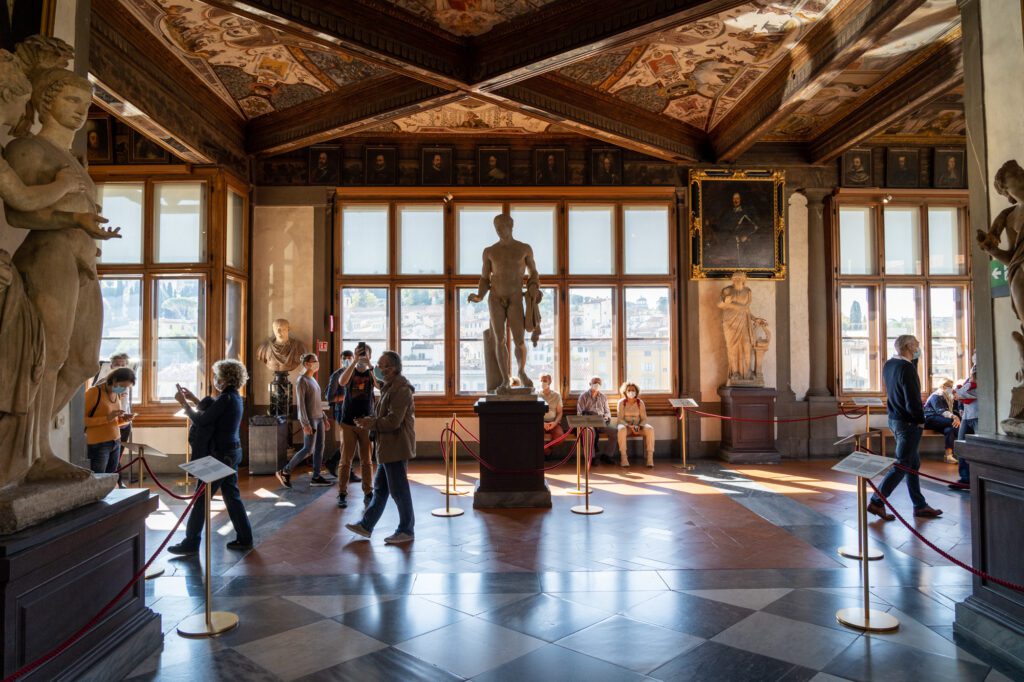
Of the two main museums in Florence, the Uffizi Gallery is BY FAR our top pick.
Yes, the David is a masterpiece, and the other works in the Galleria dell’Accademia that show you how Michelangelo’s relentless pursuit of understanding the human body led to the creation of the marble masterpiece. But we’ll talk about that in the next section.
What we really love are art museums that tell a coherent story, either about the place they’re located (the National Portrait Gallery in London), a specific movement (the Musée d’Orsay and Impressionism), or a specific artist (the Rodin Museum in Paris).
Similar to the Musée d’Orsay in Paris, which tells a compelling story about how the bad boys of Impressionism shirked conventional wisdom and forged their own path that later became one of the most iconic movements in art history, the Uffizi Gallery tells a story about the painters of the Renaissance that is inherently intertwined with the history of Florence.
The Uffizi Gallery is a pretty incredible collection of art.
Assembled by the Medici family during their reign in Florence before the building itself, originally an office building for city employees (hence the name, which means offices in Italian), was transformed into a museum in the 18th Century.
Though, at that time, it was kind of an invitation only situation – you had to know a guy (or gal) to get in.
Similar to the Louvre in Paris, it’s absolutely massive. You could easily spend a whole day there and barely scratch the surface.
But I think it’s one of the better-organized art museums I’ve ever been to, which is why it’s near the top of this list.
It’s essentially in chronological order (which is part of the reason we got interested in it after our walking tour guide mentioned it), so you get a real look at the progression of art in Florence from pre-Renaissance era through the Enlightenment period.
You’ll start in the pre-Renaissance era, where you had people mostly painting Jesus in two dimensions with a golden halo around his head, to the end of the Renaissance, when people were painting life-like figures in three dimensions that looked like real humans.
The main thrust of the Renaissance is the return to the classics, with Roman and Greek mythology starting to influence art.
That’s why two of the most famous paintings in the gallery are of Venus (The Birth of Venus and La Primavera, both by Botticelli) versus endless portraits of the Virgin Mary with an odd looking child sitting on her lap (seriously, they really struggled with painting Jesus as a child).
Over the course of a visit to the Uffizi Gallery, you’ll see important works of art from some of the most famous Italian artists, from Giotto, who many art historians (including our guide) view as the father of modern painting, to Leonardo Da Vinci, Michelangelo, Raphael, Donatello (that rounds out the Teenage Mutant Ninja Turtles) and Caravaggio.
How do you get tickets to the Uffizi Gallery, and should you book a guided tour? Let’s talk logistics!
A Richer, Deeper Experience on a Guided Tour
I’m going to be completely honest here – we’re not really huge art museum people.
Generally, there’s about a two, maybe three hour window that we can handle before we start getting bored, skipping reading all the signage, and mentally checking out as we mindlessly make our way through the rest of the museum.
It’s just not our favorite thing to do, and recently, in Italy actually, I began to understand why.
I, Matt, just don’t connect with artwork like paintings and sculptures in a vacuum.
Mostly because I don’t know anything about those forms of art, and therefore don’t really know what to look for. I was forced to take art class in high school, and it was the only class I ever did poorly in.
As an example, I’m an avid reader of fantasy novels.
If you put a book in front of me and had me read it, I’d be able to have some sort of perspective on it, know what to look for, etc. because I have experience in both writing (though admittedly not fiction, but still) and reading.
However, put a painting in front of me and my reaction is basically “well that’s pretty, I think? Right?”
In Italy, I realized that having a guide – specifically, an expert in art history or a related field – is the difference between me thoroughly enjoying a museum, and me spending two hours walking through, vaguely feeling like I’m missing something.
So, now, whenever I’m doing an art museum, I do it with a guide (or, at the very, VERY least, an audio guide).
We booked this tour of the Uffizi in Florence, and we were glad we did.
It was a little bit of a rocky start, with relatively unfriendly office staff and some technical difficulties with the radios (which are essential, by the way – it’s noisy in the gallery, and the radios help you hear the guide so they don’t have to scream), but in the end both Alysha and I enjoyed it.
Our guide, Francesco, really, really knew his stuff, and his passion for the subjects was infectious.
He brought a level of expertise that gave us the context behind the artwork we were looking at, and designed the tour to focus on a select few pieces of art, weaving together a narrative that focused on the evolution of art in Florence, with plenty of historical context to go along with it (some of it salacious – how, exactly, did a pope have a son, you might ask?).
The tour took about two and a half hours – longer than the hour and a half it says – and you’ll end the tour inside the gallery, so you can explore more if you wish.
Visiting the Uffizi Gallery Independently
If you’re not going to do a guided tour, you’re going to want to book your tickets for the Uffizi Gallery well in advance, and plan the rest of your time in Florence around that time slot.
This is the official website of the museum, and you’ll want to either book the first few time slots of the day (what we did on our past trip to Florence) or a later afternoon time slot, when the museum tends to be a little bit quieter.
Normally, I’m a big proponent of getting the audio guide for big sprawling museums because it’s a nice middle ground between wandering around on your own and a guided tour, but after experiencing it on my last trip, I’d say this one is not worth it.
Instead, I’d actually recommend the free Rick Steves audio tours instead, which I’ve come to really enjoy over my past few trips to Europe.
I have used his free audio tours as a substitute for paying extra for an audio guide or a guided tour, and generally think they’re pretty good (especially considering the fact that they’re free).
He has one for the Uffizi Gallery, and the easiest way to access it is to download his app (called Rick Steves Audio Europe) and download the guides you want in advance, that way you can access them if you don’t have internet access.
See the Statue of David (Galleria dell’Accademia)
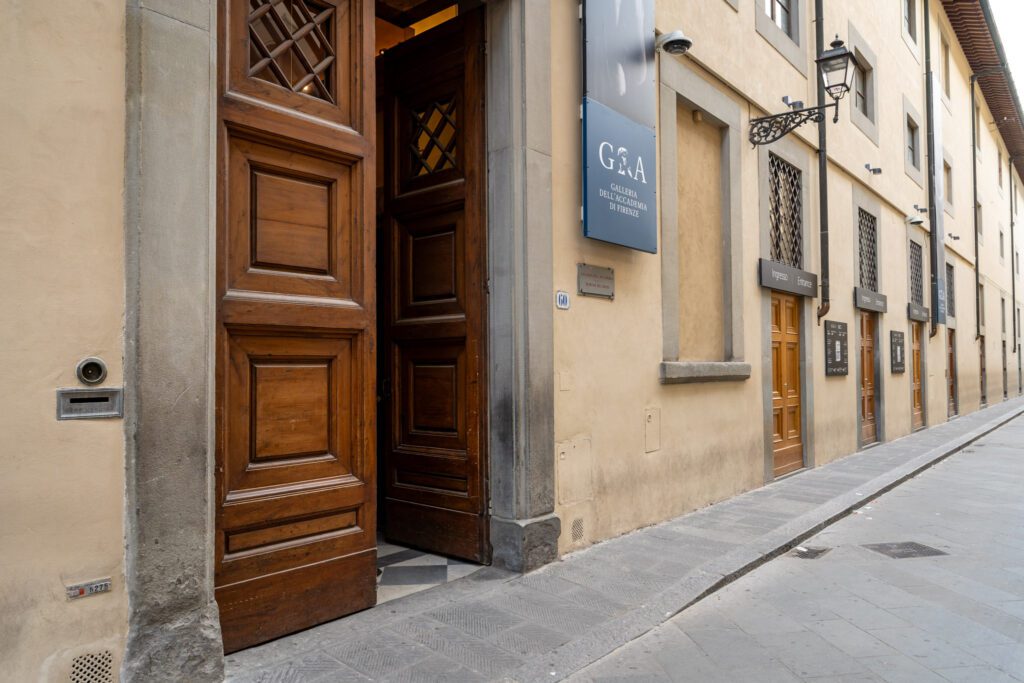
I distinctly remember my first time seeing Michelangelo’s David, one of the most incredible sculptures on the planet, in all its glory at the Galleria dell’Accademia di Firenze.
My first thought? It’s bigger than I expected.
We would say that the Accademia Gallery is one of the three things you shouldn’t miss in Florence, along with the Uffizi Gallery and the Duomo di Firenze (specifically, the view from the top of the dome and the art on the inside of the dome).
I thought that the David was a life-sized sculpture, but it stands 17 feet tall (taller because it’s elevated on a pedestal the way it’s displayed) and towers above you in the Galleria dell’Accademia (where it is now housed).
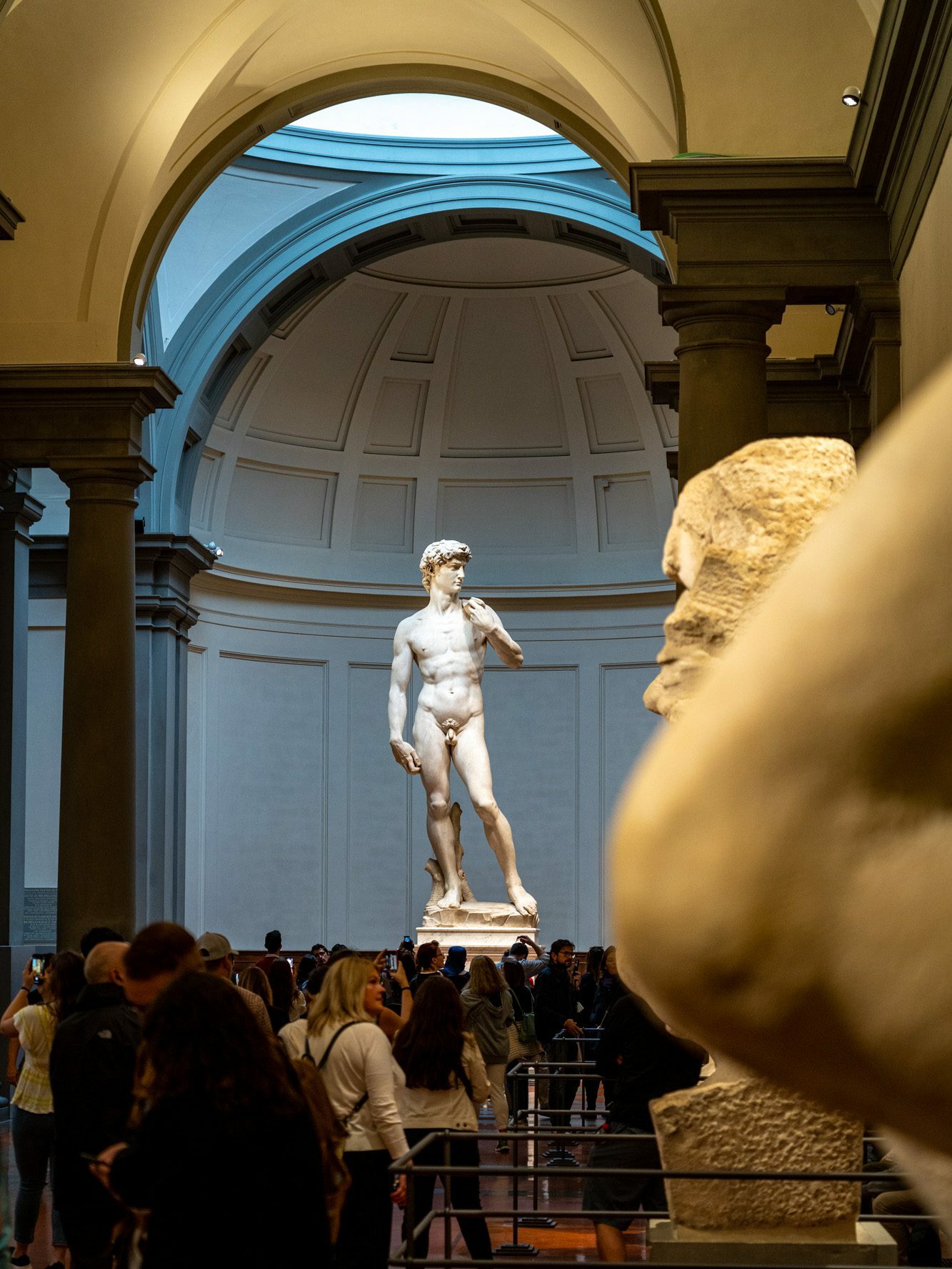
The project was awarded to Michelangelo – who was born in nearby Santa Croce – in the early 1500’s after a string of other artists tried and failed to shape the huge block of marble into a lifelike sculpture (it’s cut out of a single block of marble).
It used to be out on Piazza della Signoria, but was moved inside to protect it from the elements.
There is still a replica out on the piazza, along with another version up at Piazzale Michelangelo (which is a great view of Florence).
Many people come to this museum just to see the statue of David, though we think it’s worth taking an extra second to stop and learn about Michelangelo’s process and how his brain worked, because I found it fascinating on my last visit.
If you’re interested in that progression and the artist’s fascination with the human body, it’s worth spending an hour or two in the Accademia (and seeing the statue in that context here, where you can walk all the way around it, is also cool).
However, if we had to choose one museum to do in Florence, we would not hesitate for an instant to point you to the Uffizi Gallery.
If you only have time or interest in one, do the Uffizi and go see the replica in Piazza della Signoria on your way in.
You essentially have two options to see the Galleria dell’Accademia. You can pre-book tickets yourself (and yes, we’d highly recommend pre-booking), or you can join a guided tour.
If you want to do it on your own, you should know that tickets sell out months in advance for peak season (aka the summertime), so book as early as humanly possible.
If you’re planning a trip at the last minute and tickets are sold out, jumping on a guided tour is the best way to see the David.
One other thing we’d note – if you only have the time or budget for one guided museum tour in Florence, we’d choose the Uffizi Gallery because the tour there adds more richness and color than the Accademia tour will.
That’s not to say a guided tour isn’t worth it for the Accademia, it’s to say the tour of the Uffizi is more helpful in understanding the art, history, and culture surrounding the works of art you’re looking at.
Note: The museum is closed on Mondays.
Visiting the Galleria dell’Accademia Independently
If you want to visit the Gallery independently, your first task is to book tickets well in advance.
As soon as you know your dates for Florence, you should hop on booking tickets for the Accademia.
You can find information here.
You’ll need to choose a timeslot, which is a 15 minute window during which you are able to enter the museum.
After talking to a guide, we’d recommend a lunchtime or late afternoon timeslot, which is the least busy time of day. First thing in the morning through lunch is the busiest time to be in the museum.
Note that there is a 4 Euro fee for pre-booking tickets, but it’s a crucial step to avoid waiting in line at the ticket office AND at the entrance, so we think it’s 100% worth it.
You can also pre-book skip-the-line tickets here, which is roughly the same price and doesn’t involve navigating the sometimes confusing official website.
This is another place where I’d recommend the Rick Steves audio tour if you’re looking for a good middle ground between a tour and visiting on your own.
Visiting the Galleria dell’Accademia on a Guided Tour
There are two reasons why a guided tour might be a good choice for you.
First, you’re planning your trip to Florence at the last minute, and tickets for the Gallery are already sold out for your dates.
Second, if you want more context and are interested in the story around the David and how it came to be.
We generally opt for guided tours of most art museums at this point because we find the added richness that an expert can provide is well worth the money.
Otherwise, we kind of just wander around semi-aimlessly, and don’t really know what to look at or the stories behind the art.
There are two basic categories for guided tours of the Accademia: tours that focus exclusively on the Accademia Gallery, and tours that have the Gallery as part of a broader Florence walking tour. Which one you choose largely depends on you, your interests, and your itinerary.
If you want a guided tour solely of the Accademia Gallery, we’d choose this tour, which is highly reviewed and run by a local art historian who will cover the creation process of the statue (including his previous works, which are interesting and inform the masterpiece you’re here to see).
If you want a broader Florence walking tour that includes a visit to the Accademia, we’d go with Walks of Italy, a company we love and have done multiple tours in Italy with (read about our myth-shattering Colosseum Tour in Rome).
They have a VIP David & Duomo tour that includes both the Accademia and a climb to the top of Brunelleschi’s Dome.
Take a Walking Tour to Understand Florence’s Rich History
And I do mean “rich” in multiple ways.
First, in terms of wealth. Florence was the banking capital of Europe, and was where the first gold florins that were used as international currency were minted.
Florence was, like, a big deal.
One of the most interesting things we learned on the walking tour was a mindset shift that our guide, Andrea, brought to light.
Florence wasn’t rich because it had a lot of art. It was, in fact, the opposite. Florence had a lot of art because it was rich, and that wealth allowed for the commission of all these amazing works of art.
Second, in terms of history. It has all the makings of a good HBO series – murder, mystery, intrigue, and plenty of salaciousness (again, a pope with a son, who was made the duke of Florence? Questionable at best).
The history of the Medici Family and Florence’s relationship with the Holy Roman Empire and Catholic Church is pretty fascinating, and the best way to learn about it is by taking a walking tour that focuses on that history.
I have now done Andrea’s tour of Florence twice over the span of a few years, and on the second trip I had my mom and uncle in tow and wanted them to experience the rich storytelling that helped me fall in love with Florence’s history.
Due to timing and logistics, we did it on our last day in Florence, and by that point I had been explaining Florence’s history for a few days.
As soon as the tour with Andrea ended, my mom pointed out that many of the facts and anecdotes I had internalized clearly came from Andrea’s tour, which we had done on our first day in Florence several years earlier.
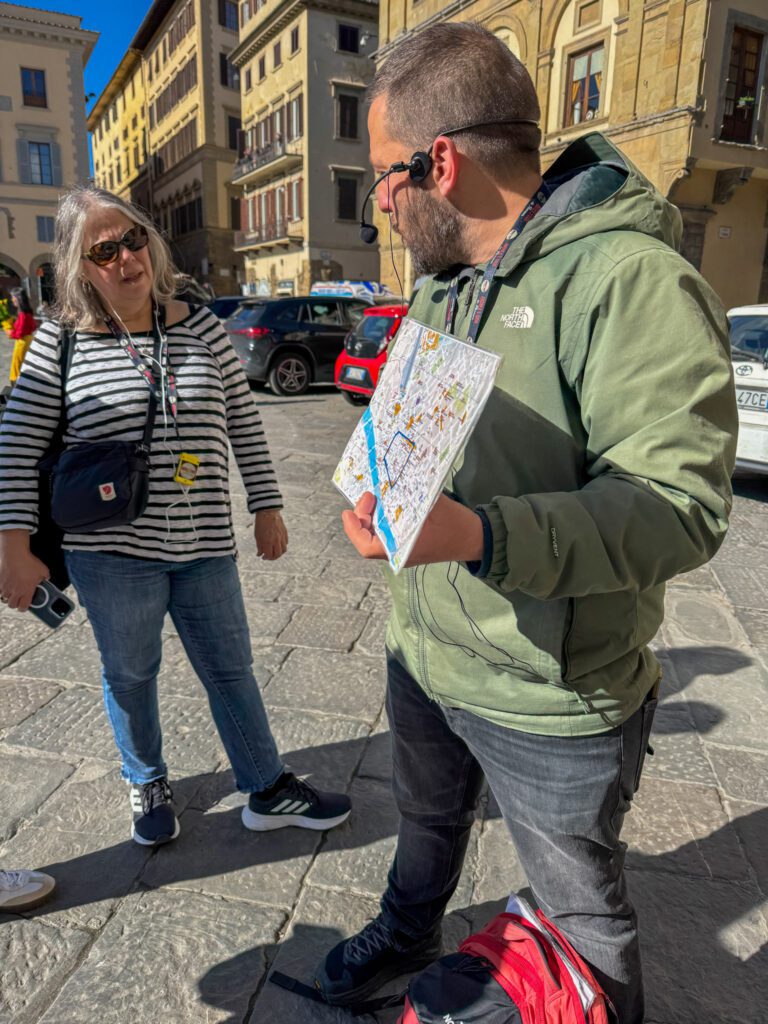
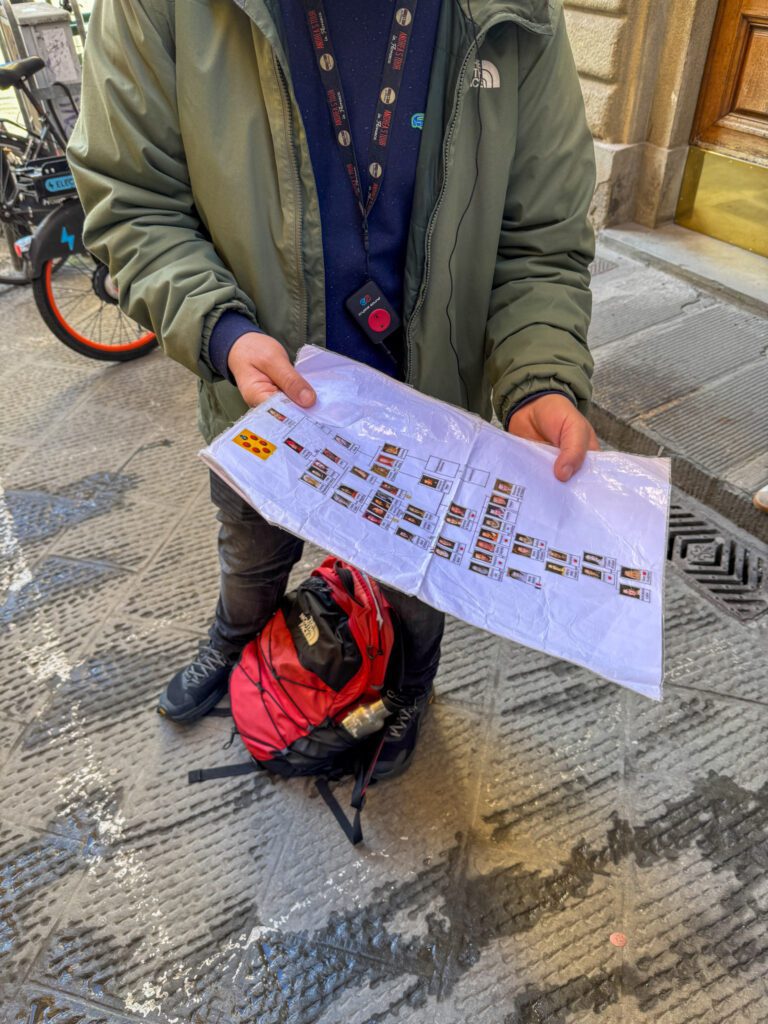
Andrea is about as Italian as it gets, and we loved the energy and enthusiasm he brings to the material.
His tour is a great overview of the city, and we liked that it was only two hours long, so it’s plenty of time to dive into the history, see some sights, and give you enough knowledge to know what to focus your time on or come back to later, but not so long that it feels like a slog by the end.
You’ll start from Piazza di Santa Croce on the eastern side of the city and make your way to Piazza di San Lorenzo over the course of the tour, with stops at Piazza della Signoria to learn about Cosimo I de’ Medici, and see the bronze statue of Perseus, which has stood in the same spot for more than 500 years.
We highly recommend it as an introduction to Florence, and you should do it as early in your trip as you can.
Explore Florence’s Coolest Neighborhoods
While most of your trip will undoubtedly be spent in the Centro Storico, where the three main sights are located (though you could argue that the Accademia is technically in San Marco), there are two other neighborhoods that may not be on your radar that we think are worth spending an afternoon exploring.
Those two neighborhoods are Oltararno, the neighborhood across the river from the historic center, and Santa Croce, which is east of Piazza del Duomo.
Oltrarno
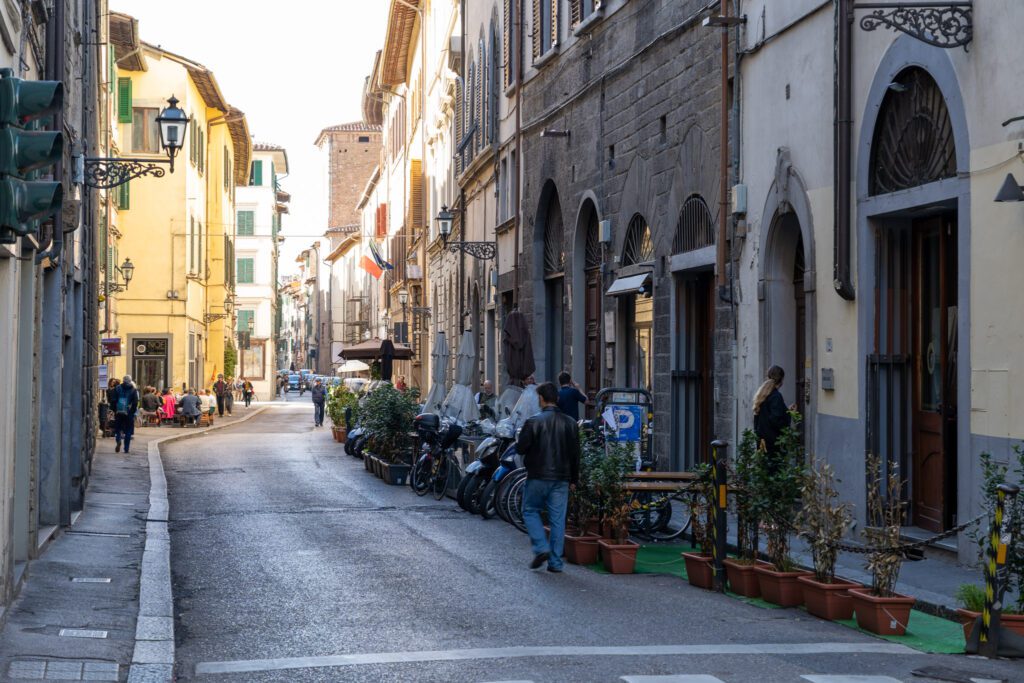
When you cross the river over onto the south bank of the Arno, you’re stepping into the side of Florence that we prefer in terms of vibe, which is called “Oltrarno” (roughly translating to “other side of the Arno”).
Oltrarno is similar to the neighborhoods we’ve fallen in love with around the world – Gràcia in Barcelona, Trastevere in Rome, the Plateau in Montreal – in that, despite being in a city that sees a lot of tourists, the neighborhood feels like people actually live there and the businesses that exist there reflect that balance between visitors and residents.
That’s not to say that the crowds of visitors evaporate as soon as you hit the south bank of the Arno, but especially as you move deeper into the neighborhood, their presence gets less overt, and you start to hear more Italian being spoken.
Here are a few places in Oltrarno that we like, have been to (usually multiple times), and would recommend.
Piazza Santo Spirito is one of the main squares in Oltrarno and is filled with plenty of shops, restaurants, and bars. Being the primary hub of activity in the area, you’ll often find markets and special events taking place in the piazza too.
The basilica on the square (the Basilica di Santo Spirito) is free to enter, and is worth stepping into because it has some nice art, and is a contrast to the other, more ornate churches you’ll see in Florence.
Ditta Artigianale: This is my (Matt here!) favorite coffee spot on this side of the river, and this is their flagship cafe.
They have the most “American” coffee menu I’ve ever seen in Italy, complete with specialty lattes with housemade syrups (which you just don’t see that often).
Remember that you’ll pay extra to sit at a table versus getting it to go (or standing at the bar).
Gelateria della Passera: An extremely popular gelato spot on a back alley in Oltrarno where you’ll often find a long line stretching into the square just outside its front doors.
Very fresh – they store it in covered stainless steel tanks, which is always a good sign – and they have fun, rotating flavors using fresh seasonal ingredients.
For what it’s worth, this was Alysha’s favorite gelato in Florence.
Le Volpi e l’Uva: This wine bar a few steps from Ponte Vecchio is a long-standing institution in Oltrarno, and has been here for thirty years (and won tons of awards over that timeframe).
They have wines from all over Italy, but they have a bunch of nice wines from Tuscany, and are happy to chat with you to find something you like (and teach you something about wine in Italy while they’re at it).
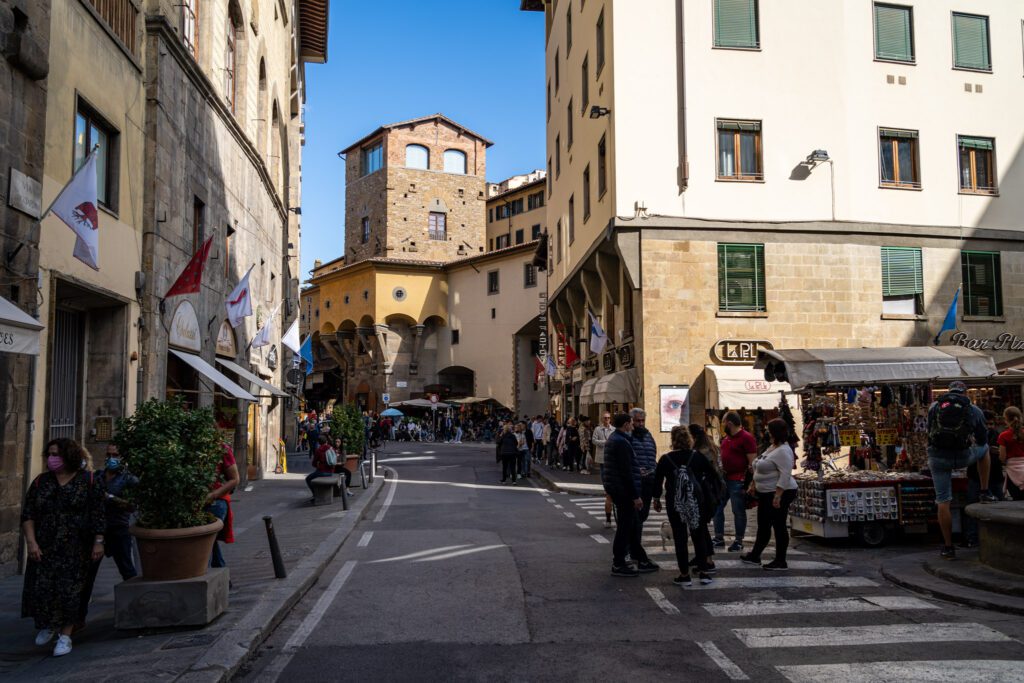
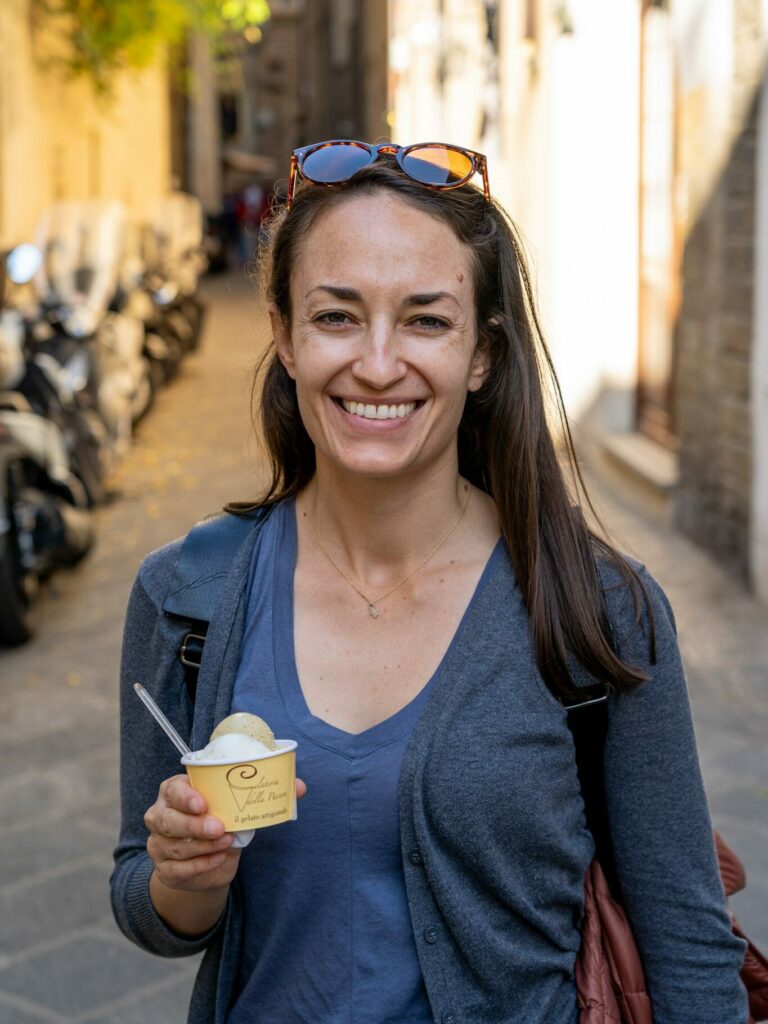
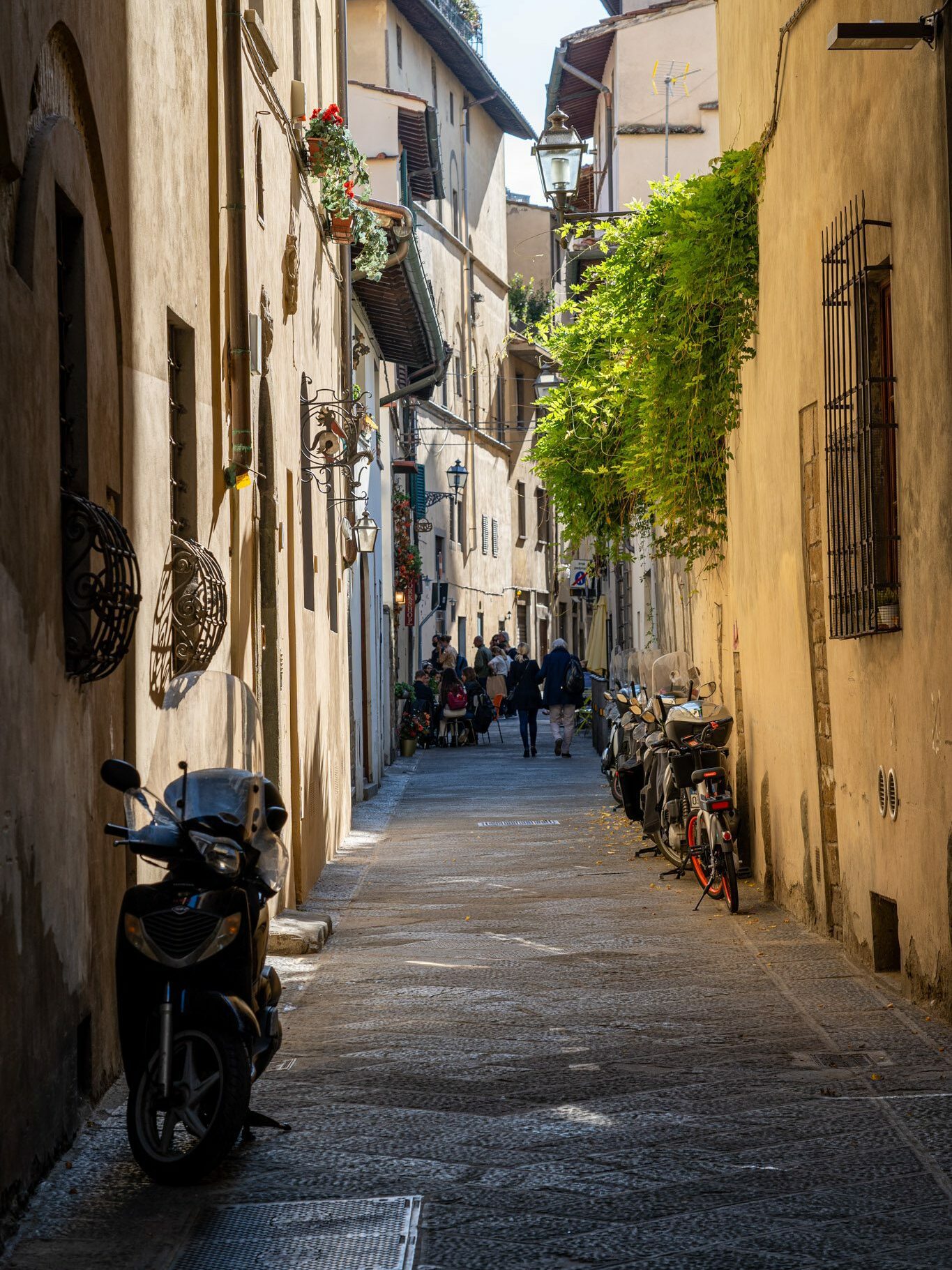
It’s also worth noting that one of our favorite views in Florence – the sweeping view from Piazzale Michelangelo – is also on this side of the river.
We like the idea of spending an afternoon in Oltrarno and then heading up to Piazzale Michelangelo for sunset (though we should note that the light is actually better in the morning, we think). More on this below.
Here’s a map that links most of those spots with the walk up to Piazzale Michelangelo and back over the river to Santa Croce, which would make for an excellent afternoon/evening extravaganza.
Santa Croce & Sant’Ambrogio
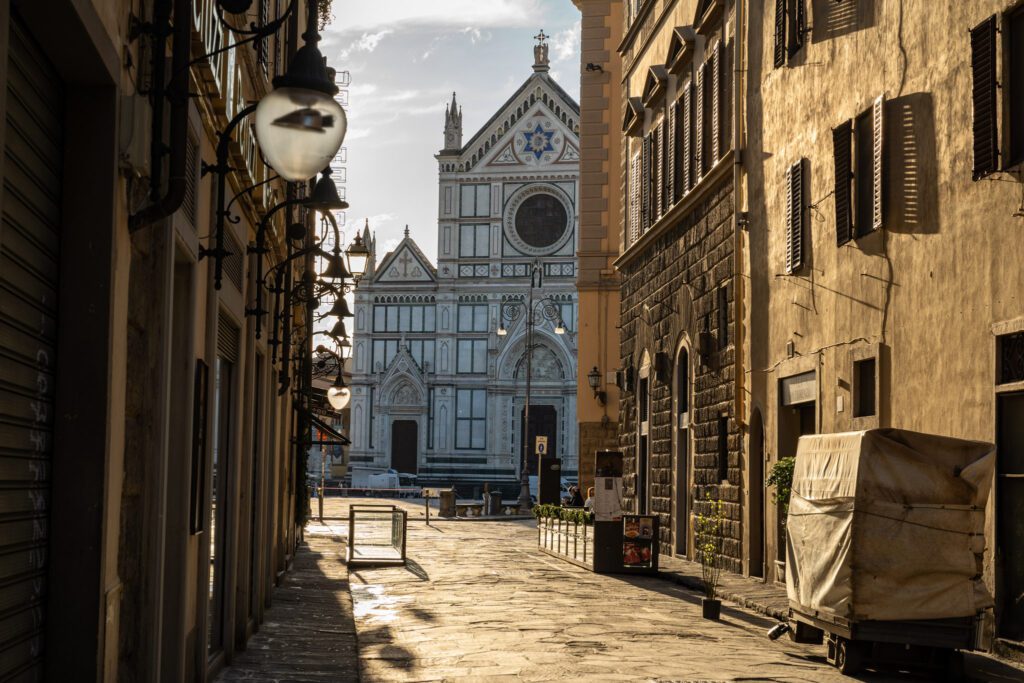
Santa Croce and Sant’Ambrogio are the pair of neighborhoods immediately to the east of the historic center, a 10-15 minute walk from places like Piazza del Duomo and Piazza della Signoria.
The neighborhood’s two major landmarks are the Basilica di Santa Croce – which is the area where Michelangelo grew up (his tomb is inside the basilica) – and the Mercato di Sant’Ambrogio, which is a covered food market that is a good option for lunch (or an afternoon snack).
Technically, Sant’Ambrogio is so-named because of the church of the same name (a theme you’ll see all over Italy), but today the Mercato is more of a landmark to us.
This part of the modern city of Florence was once outside the city walls and was a very poor part of the city, but it has since become one of the most desirable neighborhoods in all of Italy.
Aside from Santa Croce and other attractions, it also happens to be a great place to eat and drink. Here are some spots we think you shouldn’t miss.
The Basilica di Santa Croce: Our favorite church interior in Florence, at least partially because many of the city’s famous scientists and artists (like Michelangelo, Galileo, and Machiavelli) are buried here and have ornate tombs inside. Plus, tons of amazing art on display, and a nice cloister. Buy your ticket online in advance to skip the long line at the ticket office and head straight to the security line.
The Scuola del Cuoio: While the open air leather market near Mercato Centrale might seem like a fun experience, the reality is that the leather being sold there isn’t exactly the highest quality.
It’s fun to look at all of the goods on display, but if you want the true Italian craftsmanship that made Florence rich, you should head over to the leather school, which also has a shop where you can purchase belts, bags, wallets, and just about anything else you can imagine.
I got Alysha a nice green leather coin pouch here, and they monogram it for you when you buy it, which was fun.
Mercato di Sant’Ambrogio: Of the two main food markets in Florence (the other being Mercato Centrale), this one feels significantly more down to earth and real.
Lots of vendors to explore, some of which sell ready-to-eat foods, some are selling specific ingredients like cheese, meat, or veggies.
The market is at its busiest (and most exciting, we’d argue) in the early morning, when the outside area is taken up by a fruit and vegetable market, but another good time to come is for a late lunch, when you can eat your way from stall to stall gorging yourself on things like trippa alla Fiorentina (delicious) and lampredotto (more tripe!), among other traditional Fiorentine delicacies.
Enoteca Alla Sosta Dei Papi: A tiny little wine bar along bustling Via Pietrapiana that we stumbled upon a few years ago, and return to every time we’re in Florence.
Coffee Mantra: My favorite coffee shop in Florence, they use coffee from a local roaster (Gearbox) and rotate the single origin they have available on a weekly basis.
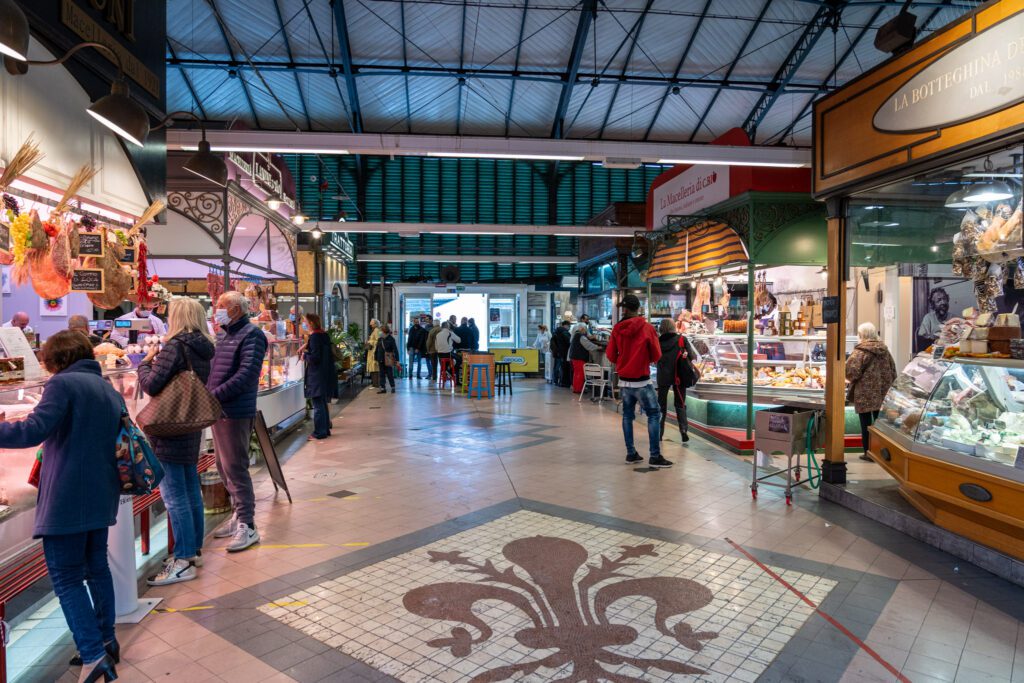
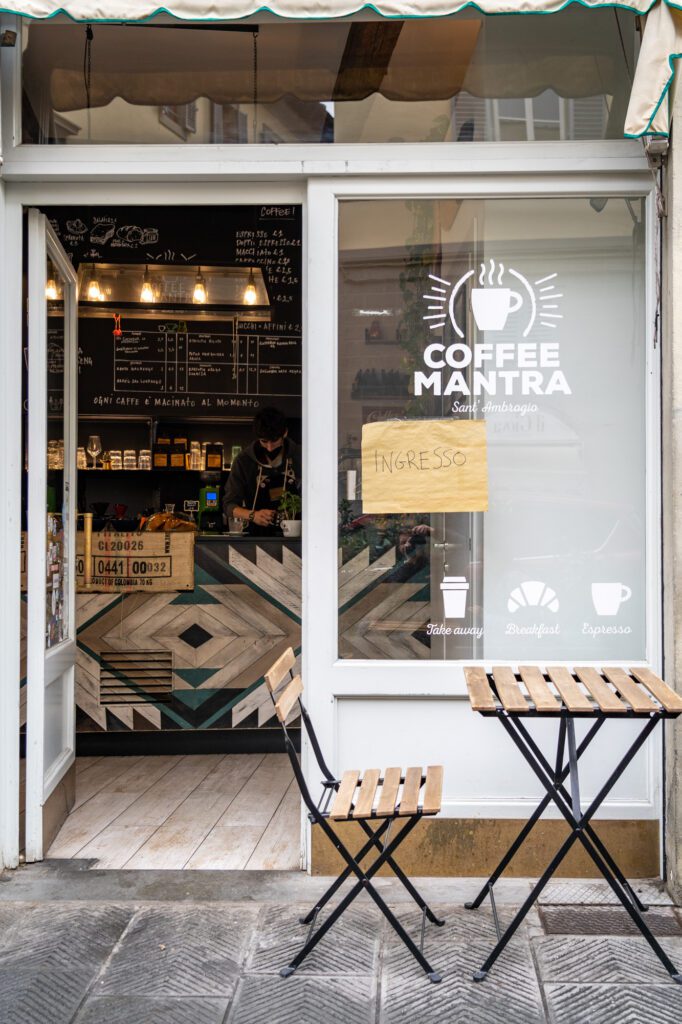
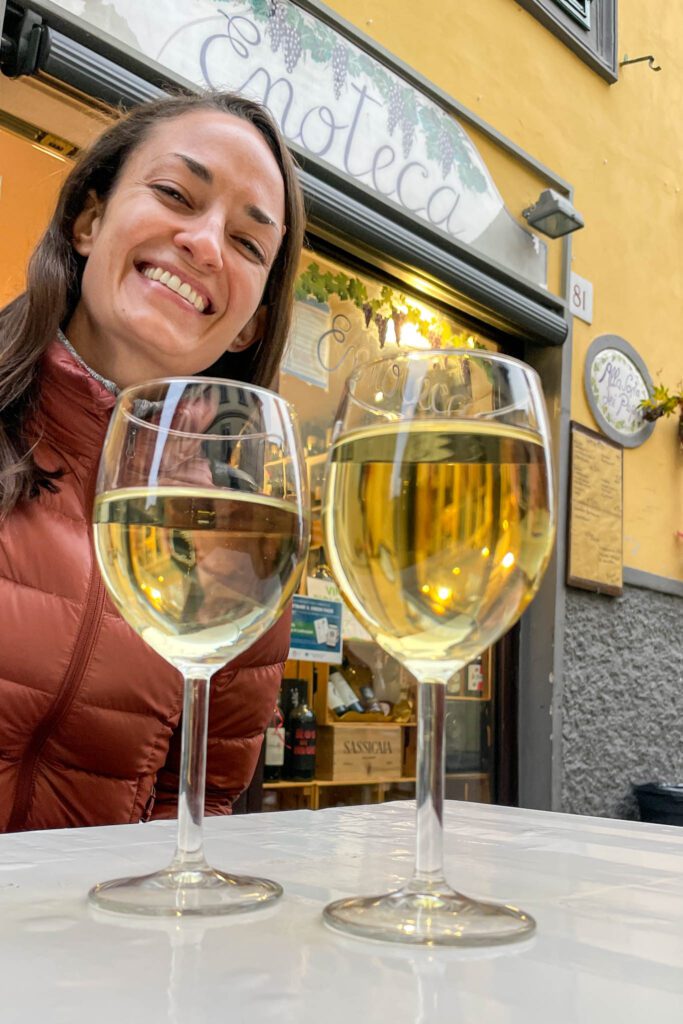
Connect with a Local to Dive Deep into Florentine Cuisine
Diving into the food culture in places we’re visiting is one of our favorite aspects of traveling, and we try to include a food tour, cooking class, or market tour in most places we visit.
Unfortunately, the reality is that because Matt has Celiac Disease and can’t have even a speck of gluten without being sick for days, a food tour or cooking class usually isn’t in the cards for us.
HOWEVER. That does NOT mean it shouldn’t be for you!
We’d highly recommend it because it gives you a local’s perspective on the city’s food scene – what and where to eat and drink – and you get to connect with fellow travelers and try some amazing food.
In Florence, we actually found a completely gluten free cooking class (this one) that I did on my latest trip, which was an excellent way to learn about Italian food culture, meet some like-minded travelers, and eat some delicious food (with the recipes to make it at home, too!).
Here are some options for you, split between food tours and cooking classes. Our bias is to do a cooking class, because we LOVE to cook, but we also enjoy a good food tour.
Option 1: Learn to Cook Tuscan Food with a Cooking Class
We’ve done all sorts of cooking classes around the world (read about our cooking class in Mexico City here), and while the gluten-filled nature of Italian food makes it nearly impossible to find a safe cooking class.
However, there happen to be multiple gluten free cooking classes available in Florence, which means Matt got to make fresh pasta for the first time in his life!
Fear not, if you’re not gluten free, the cooking school we went to has gluten-full options (which we’ll link below).
If you’re gluten free, we highly recommend the gluten free cooking class I did with my family, which was one of the highlights of that particular trip to Italy.
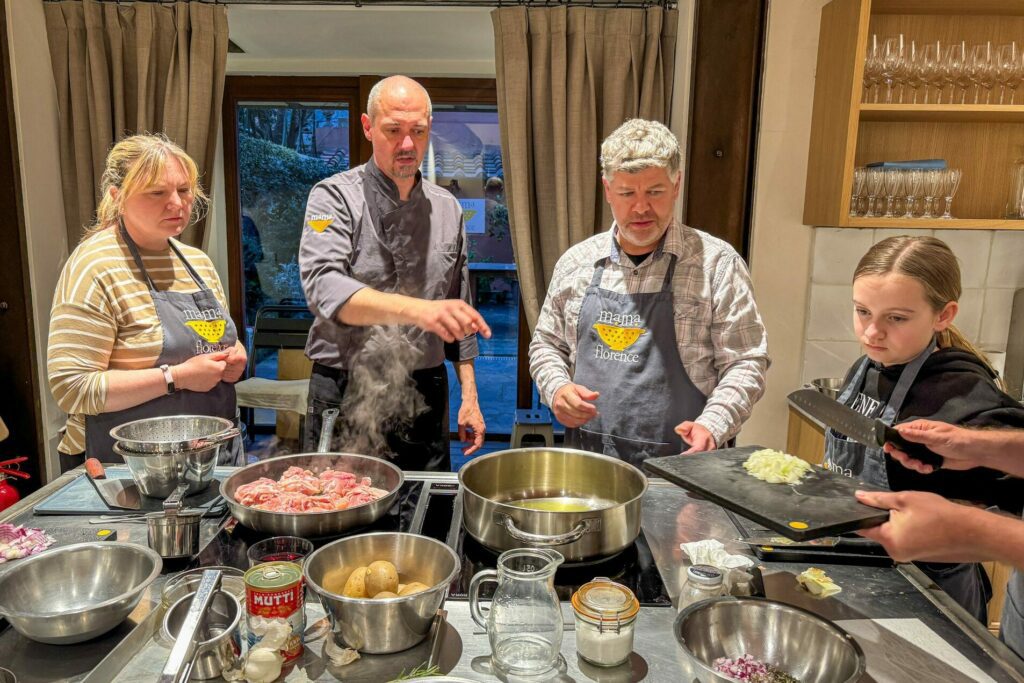
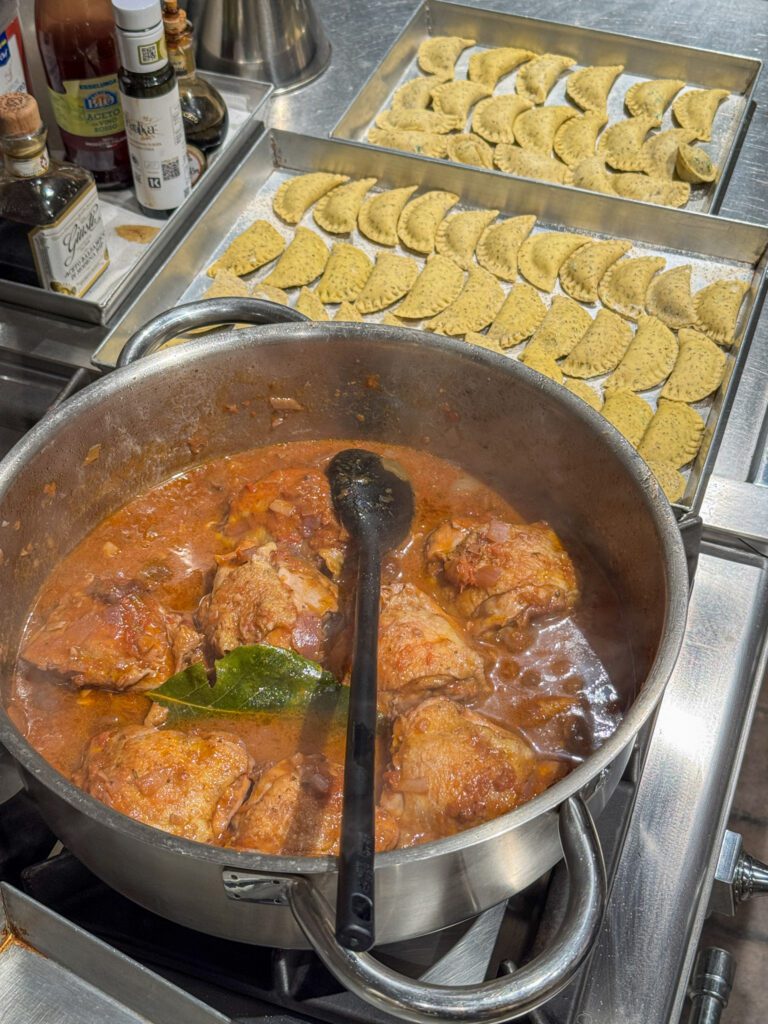
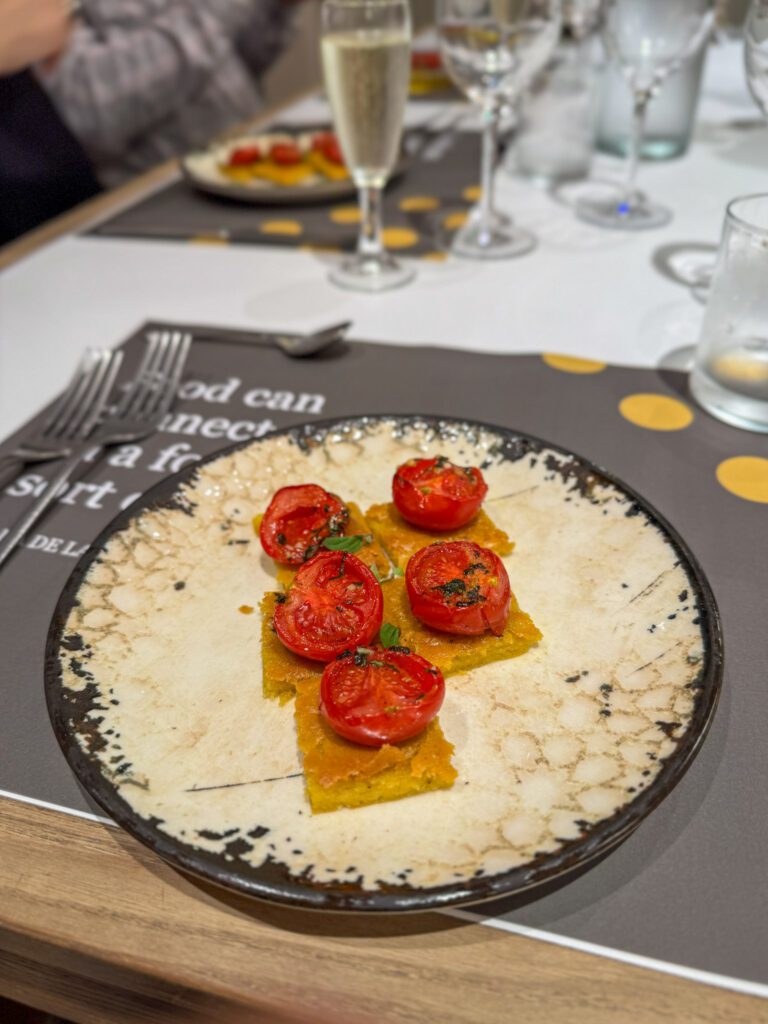
We still make the chicken cacciatore at home (they send you the recipes after class).
Surprisingly, there are actually two gluten free cooking class options in Florence – the other one being this three hour class, which we’d also consider.
If you’re not gluten free, here are the two options we’d look at – one in Florence itself (that includes a market tour), and one outside of Florence in the Tuscan countryside (which is a nice change of pace).
Market Tour and Tuscan Cooking Class in Florence: This class is with the same company we used, but is the version that uses gluten AND does a market tour as part of the class (which we always love to do because you get so much more out of it than if you just walk through the market on your own).
It’s at their beautiful cooking studio in Oltrarno, just a short walk from the center of Florence.
You’ll make a three or four course meal, enjoy some local wine, and get the recipes sent to you at the end of the night to recreate the magic at home.
There’s also a shorter version that skips the market tour, if that’s not something you’re interested in.
Pasta Class in the Tuscan Countryside: We like this class because it takes you outside of Florence to an estate in the countryside, which lets you see a different side of Tuscany (plus, it includes the transportation!).
It’s a lunchtime class, which means you get a relatively early start in the morning, which might change some other plans on the day you do it.
You’ll make multiple kinds of pasta (usually a filled pasta like tortelloni and a fresh pasta like tagliatele) and a dessert, and, of course, drink plenty of wine.
It’s a longer experience, and might make more sense as a day trip you do, depending on what you’re interested in.
Option 2: Deeper into Florence’s Food Culture on a Food Tour
Food tours are another great way to get a level deeper, and often include many stops that take you to a variety of trattorias, gelaterias, and osterias along the way.
Here are some food tours that caught our eye though, sadly, we skipped these because of the whole gluten and cross-contact issue.
Oltrarno at Sunset (Food & Wine Tour): This tour is with our favorite company in Italy (really, their sister company, Devour) and takes you on a journey through Florence’s food culture over the course of three-ish hours in the evening, focusing on the other side of the river, Oltrarno.
Florence Sunset Food & Wine Tour: This tour is with a company that my mom has done multiple tours with around Europe (Lisbon and Milan) and loves, though for gluten reasons, I’ve never experienced their tours.
This is also focused on Oltrarno, which is our favorite part of the city to explore because it feels like real people actually live there (unlike the historic center).
Shop for (High Quality) Leather
As you’re wandering around Florence, you’re likely to notice that there are a LOT of leather shops around.
If you’re walking around near Mercato San Lorenzo, you’ll find yourself walking through an open-air leather market with leathers in all shapes, sizes, and colors.
Though, if you take a second to look a little deeper, what you’ll find is that all of these stalls seem to be selling the same exact pieces in the same exact colors.
Which doesn’t make sense if they were all producing their own leather products.
Turns out, after asking a few people over the course of my latest trip, they’re selling mass-produced leather goods that, on balance, are probably better than your average $10 Amazon product, but are likely not locally made or high quality leather goods.
Each of the people who I asked about the open air market and the quality of the leather there pointed me in a singular direction for high quality leather goods; the Scuola di Cuoio.
Tucked away behind the Basilica di Santa Croce, the leather school has an onsite workshop and a wide range of leather products – from wallets and belts to hand stitched bags – that you can customize and buy.
The leather is soft and supple, and there are a nice variety of colors to choose from.
The prices are, as you might imagine, a bit higher than the aforementioned street vendors, but the quality is incomparable.
I was with my mom, a former buyer for a big fashion retailer, and she was impressed with the leather quality for the price (it would be vastly more expensive if you bought the same products under a brand name in the United States).
I picked up a beautiful little green leather coin purse for Alysha, which came with a free monogram of her initials.

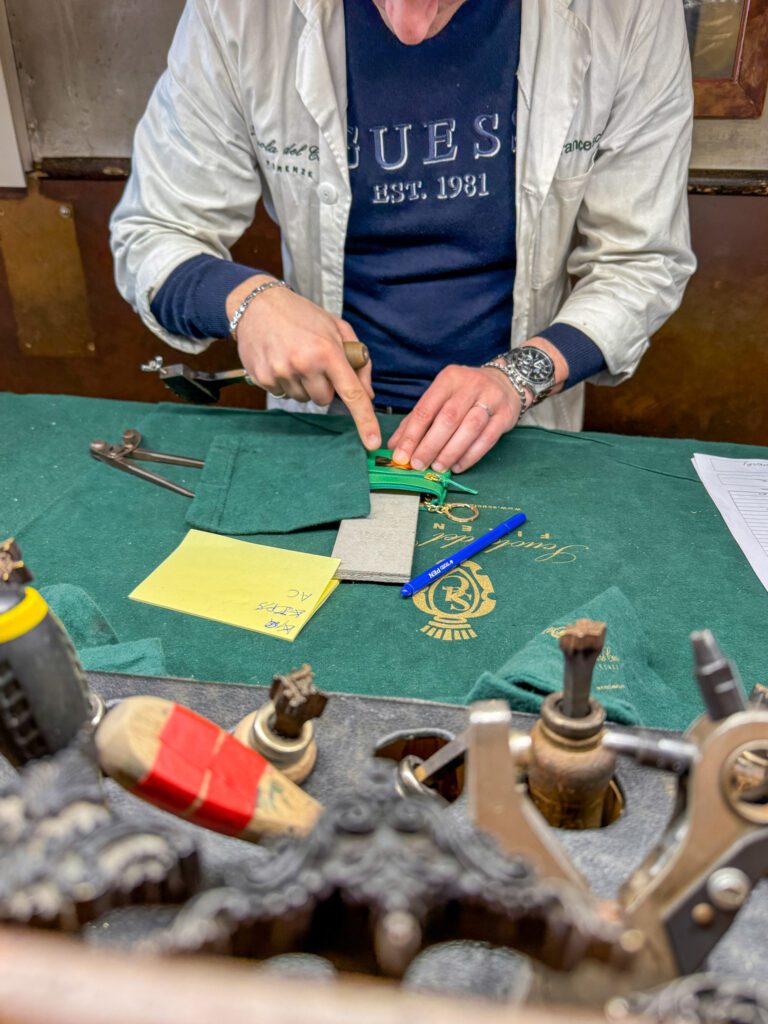
The takeaway here is to skip the open air market, which is a misrepresentation if you’re being charitable (and a scam if you’re not).
Instead, head to either the Scuola di Cuoio or another locally owned Italian leather shop (like I’Mago, which we went into to peruse and found ourselves chatting with the owner, which you can find here on Google Maps).
Peek Inside Florence’s Less Heralded Churches
While the climb to the top of the Duomo di Firenze – officially known as the Cattedrale di Santa Maria del Fiore – is spectacular, we were actually relatively unimpressed with the interior of the church (which is actually free to enter and usually has LONG lines in the piazza in front of the church).
In fact, given limited time, we would just skip the interior altogether and focus on the dome climb.
We also love the baptistery, but we realized that the incredible mosaics on the ceiling are currently being restored and are covered by scaffolding (and will be until the late 2020’s, so for the foreseeable future).
Instead of the interior of the Duomo, we’d prioritize the other two big churches in Florence, the Basilica di Santa Croce and the Basilica di Santa Maria Novella, which are both worth a visit.
If you think about the location of these two churches, which are both outside the original city walls that enclosed the original version of the city, they were both located in very poor neighborhoods on the other side of the proverbial tracks.
They were, respectively, Dominican and Franciscan, which are both orders dedicated to serving the less fortunate, so you aren’t going to find the ridiculous displays of wealth that you find at, say, St. Peter’s Basilica.
Though despite that fact, they do feature an incredible array of art and architecture that’s a who’s who of Florentine art royalty.
Santa Croce, which would be our first choice if you only have time for one.
We’d also add the Basilica di San Lorenzo, but the focus there is less on the church and more on the Medici Chapels, one of which was done by Michelangelo, and the other – the Cappella dei Principi – is an ostentatious display of raw power and wealth, with floor to ceiling marble (and we’re talking 30 foot ceilings here – it’s a LOT of marble).
All three are worth your time (you don’t need to spend more than an hour to see each of them), but if you only have time or interest for one we’d make it Santa Croce for the tombs of famous Florentines and the cloister.
The Basilica di Santa Croce
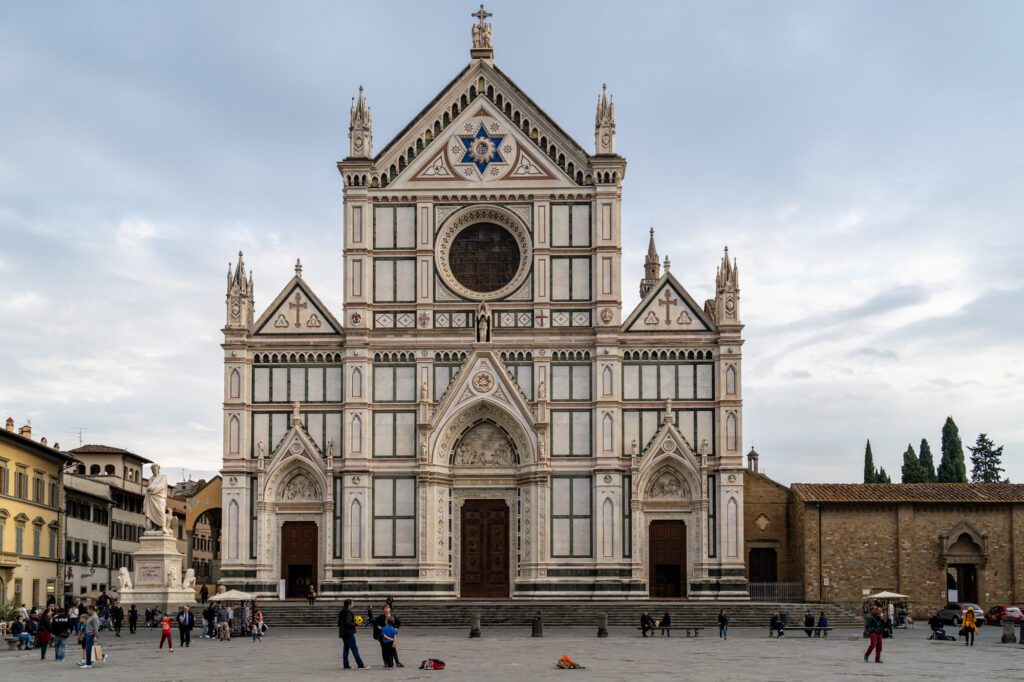
The Basilica di Santa Croce is the centerpiece of the neighborhood of the same name just east of Piazza della Signoria, and this is the neighborhood where Michelangelo Buonarotti (better known by his first name alone) grew up and was “discovered” by the Medici family, leading to his meteoric rise to prominence.
The Basilica di Santa Croce is a Franciscan church, which is an order dedicated to serving the poor (it’s actually the biggest Franciscan church in the world).
While, today, Santa Croce is one of the most desirable (and therefore wealthiest) neighborhoods in Florence, it used to be outside the historic center and was a relatively poor part of the city.
There are several reasons why we like the Basilica di Santa Croce.
First, the ornate tombs of famous Italians – Michelangelo, Galileo, and Machiavelli are all buried here.
Second, the art adorning the interior of the basilica is a who’s who of the Renaissance, with works by Giotto (who also designed the bell tower of the Duomo), and Donatello.
Last, the cloister is a nice oasis from the hustle and bustle that exists just outside of the walls of the complex.
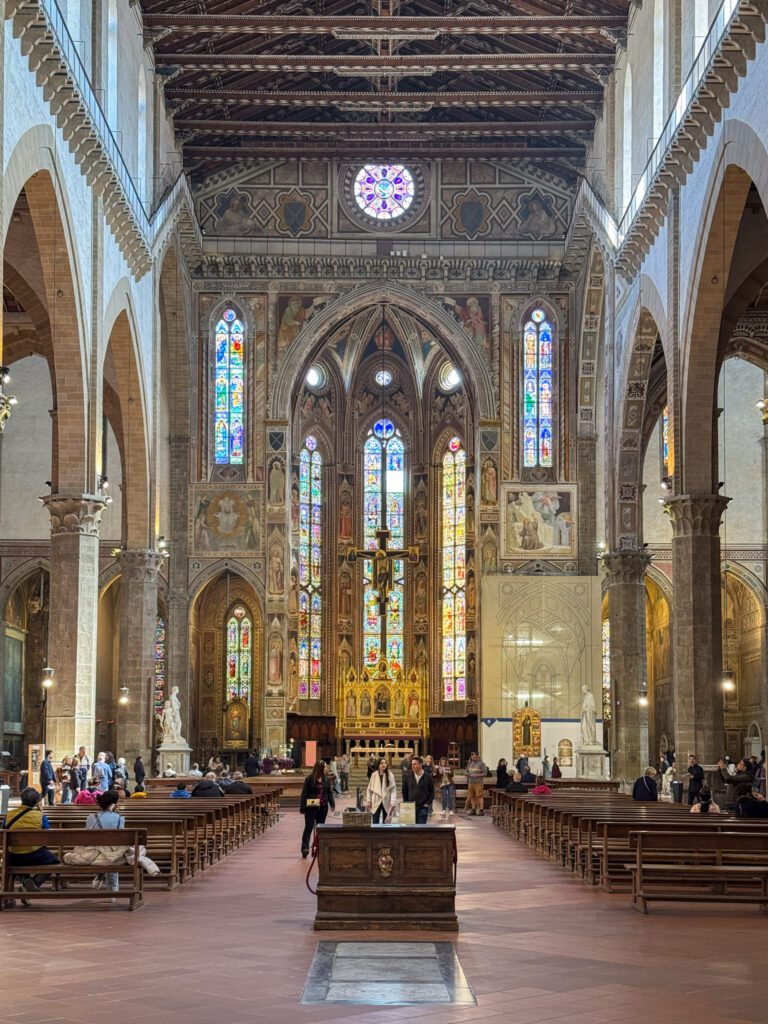
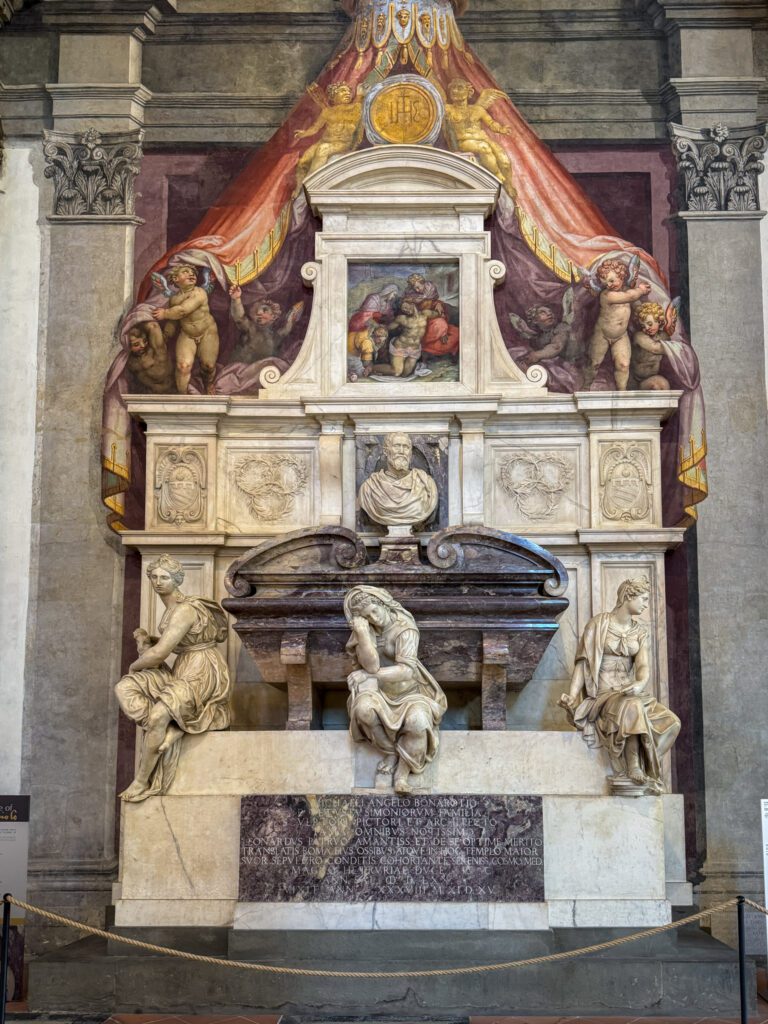
Tickets here cost €10 and you can buy them on the official website (which also has the most up-to-date information on opening hours).
You can buy them in advance (they cost an extra €1 to buy in advance) to skip the line at the ticket office (which can be long), or just buy them onsite for more flexibility at the cost of the 15-20 minutes you’ll spend in line.
Worth noting that they have a family ticket for €10, which is a good way to keep costs down for parents with kids.
The Basilica di Santa Maria Novella
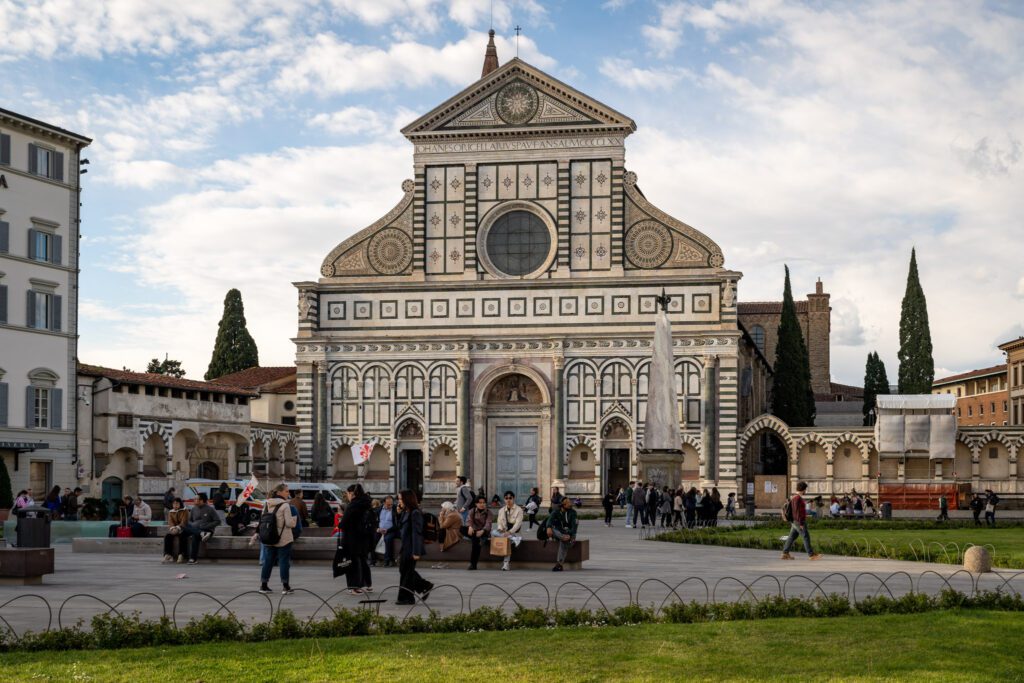
This is the basilica that is right next to the train station, which shares the name, and is actually the oldest church in the city (it was started in the 13th Century).
The reason the word “novella” (which means new) is in the name is the fact that, like many churches in Italy, it was built on the site of an older church (or a pagan temple).
The façade is similar to the Duomo and Basilica di Santa Croce, with that same multicolored marble.
Unlike the Duomo, however, the marble only covers the front, and the rest of the structure shows the exposed brick that is under the ornate façades of these churches in Italy.
Again, the art here is the highlight, with works from Renaissance masters Lippi, Donatello, and Botticelli, who you will see if you’ve been to the Uffizi Gallery. Even Brunelleschi (the architect of the cupola at the Duomo) got in on the action!
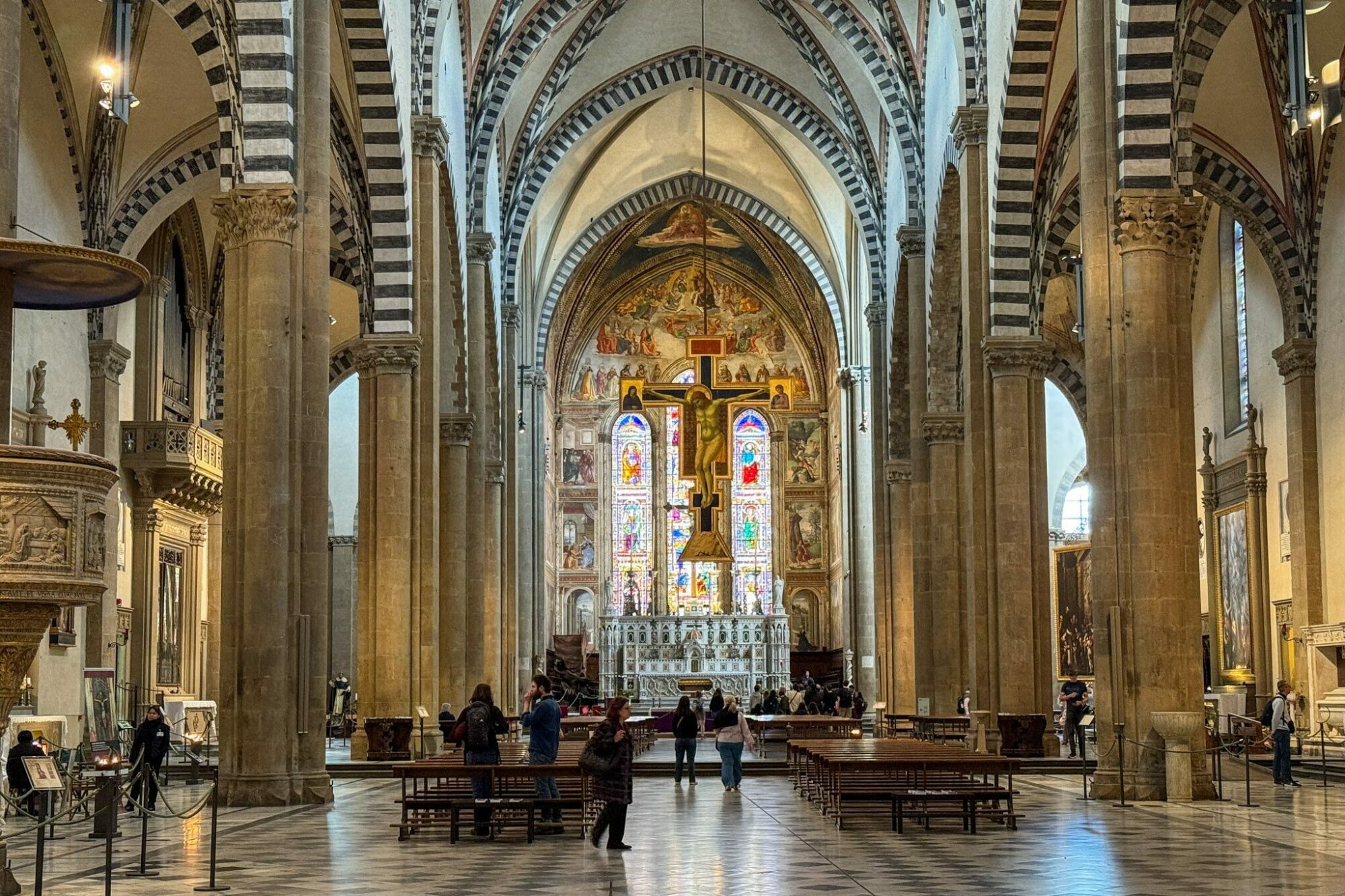

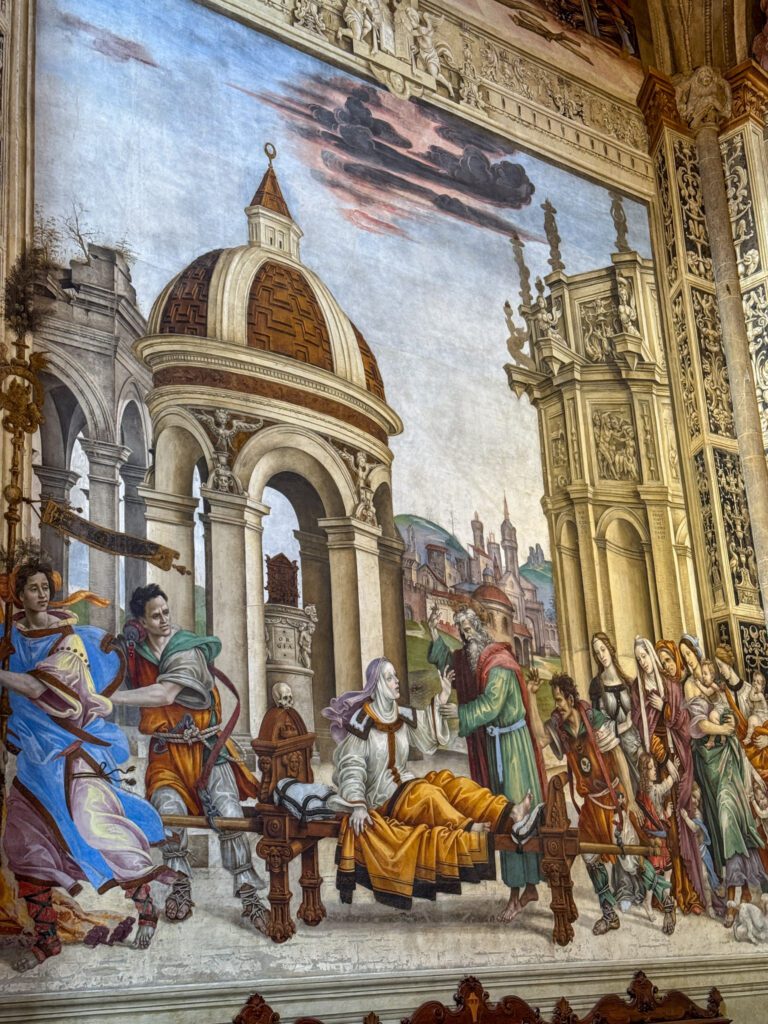
There are tons of different chapels, each dedicated to a different saint or funded by a different wealthy local family. The cloister here is also really nice, and is massive.
No need to buy tickets in advance here – just show up and buy them on site. Here’s the official website with more information on opening hours and costs.
The Basilica di San Lorenzo
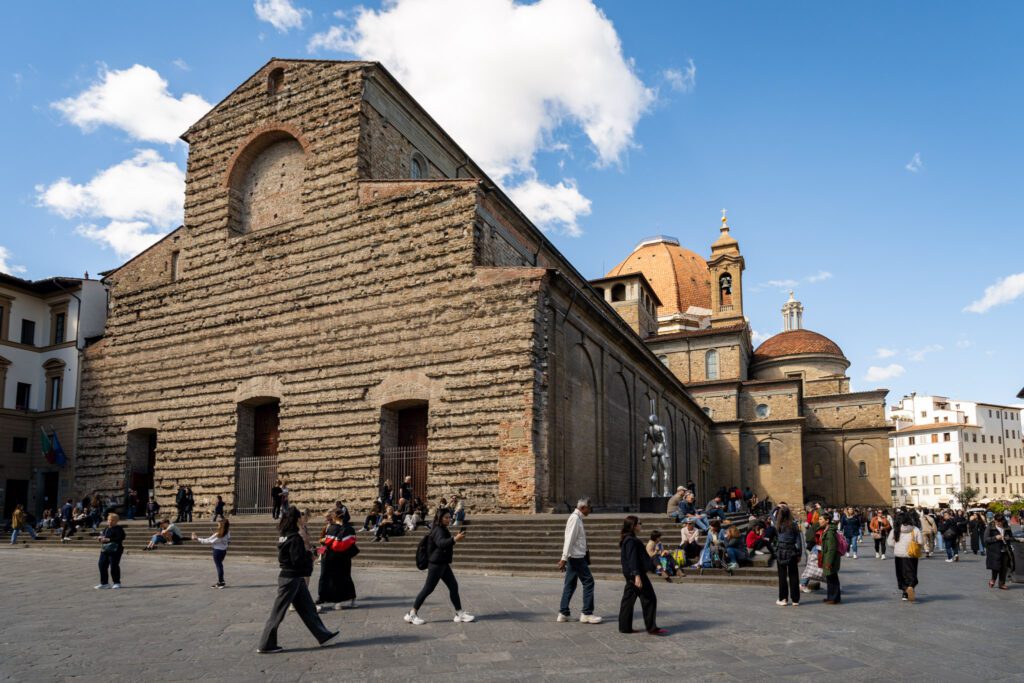
This was a recommendation from Andrea, the walking tour guide I mentioned above, when I asked him which of these three churches he liked best (he starts his tour at Santa Croce and ends it at San Lorenzo, which are his two favorites).
Unlike the first two churches in this section, the exterior of the church is entirely the structural brick rather than the ornate marble.
It seems as though they saved all of the marble for the two chapels dedicated to the Medici family, who are the family that ruled Florence during the 15th through 18th Centuries.
I say “ruled” because, while the government was a republic on paper at the beginning, the wealth of the Medici family allowed them to monopolize the positions of power in Florence and install themselves at the top of the city’s government for generations.
Eventually, it evolved into the Duchy of Florence and then the Duchy of Tuscany, which was ruled by the duke, a member of the Medici brood, and left all ideas of representative government behind.
It’s a salacious history that we love, involving several supposedly celibate Medici family members that become pope and have multiple children, and it’s every bit as worthy of an HBO show as Game of Thrones (there’s actually a Netflix show, but it was strictly okay in my opinion).
The main draw here are the Medici Chapels, of which there are two – the Sagrestia Nuova and the Cappella dei Principi – and they reflect the meteoric rise to power that the Medici family saw over the course of the 14th through 18th Centuries.
The old chapel – the Sagrestia Nuova (ironic that the older is named Nuova) – was built in 1520 and features work by Brunelleschi and, of course, the early work of Michelangelo, whom the Medici family “discovered” in Santa Croce and brought him into the fold.
The newer chapel – the Cappella dei Principi – is by far the more impressive of the two and reflects the wealth and power accumulated by the family. It was built 120 years later in 1640, and is truly a masterclass in projecting wealth and power.
As I entered the Cappella dei Principi for the first time on this latest trip, I uttered an involuntary “whoa!” that made the security guard chuckle.
It is floor-to-ceiling marble, including some of the rare red Egyptian marble (Porphyry) that was used to show that you basically have unlimited money.
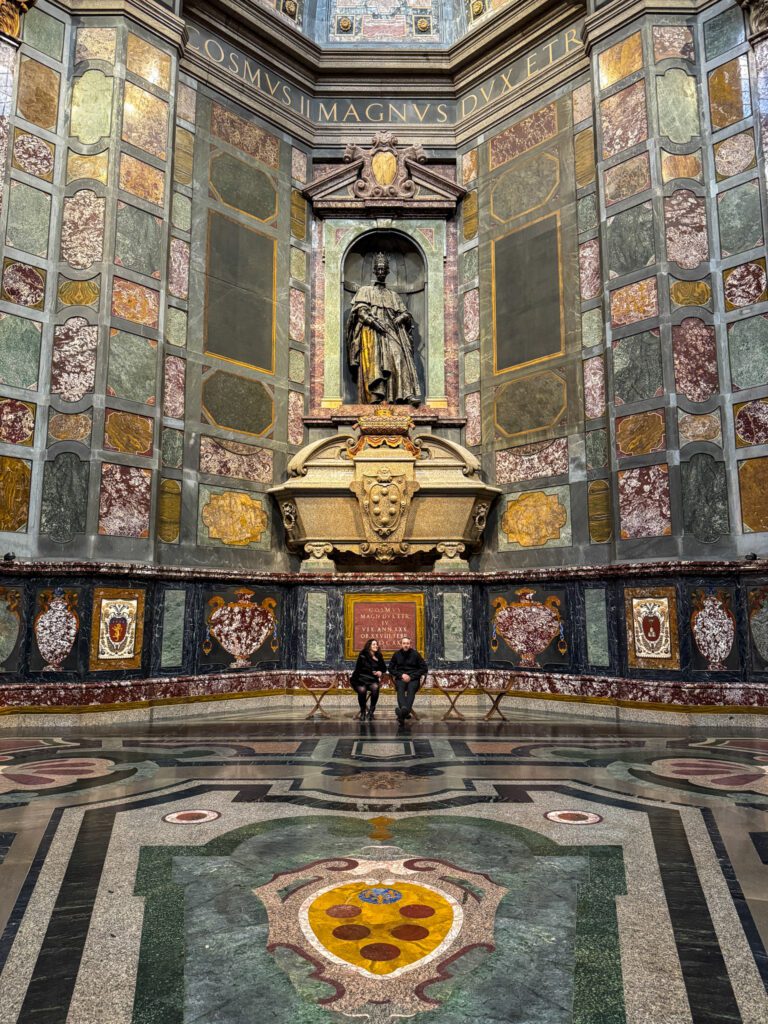
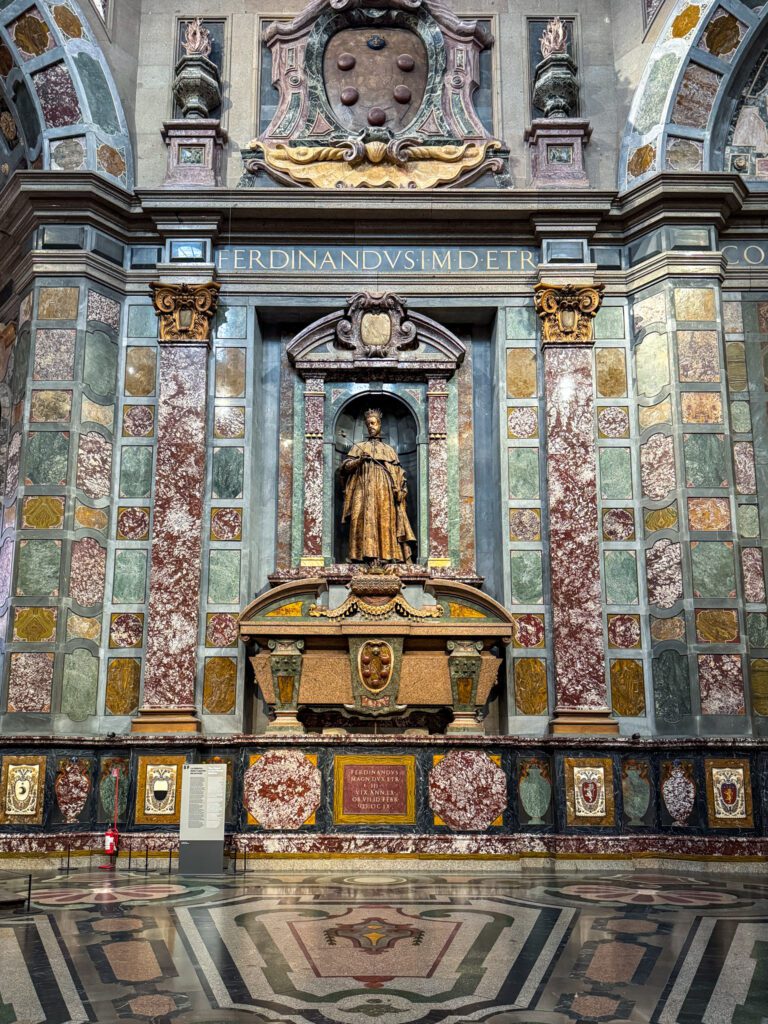
Lining the walls are huge statues of the Grand Dukes of Tuscany atop their sarcophagi towering over you, a lowly visitor.
The visit here costs €9, and you can buy tickets on arrival. More information, including hours and costs, on the official website.
Wander Palazzo Pitti and the the Boboli Gardens
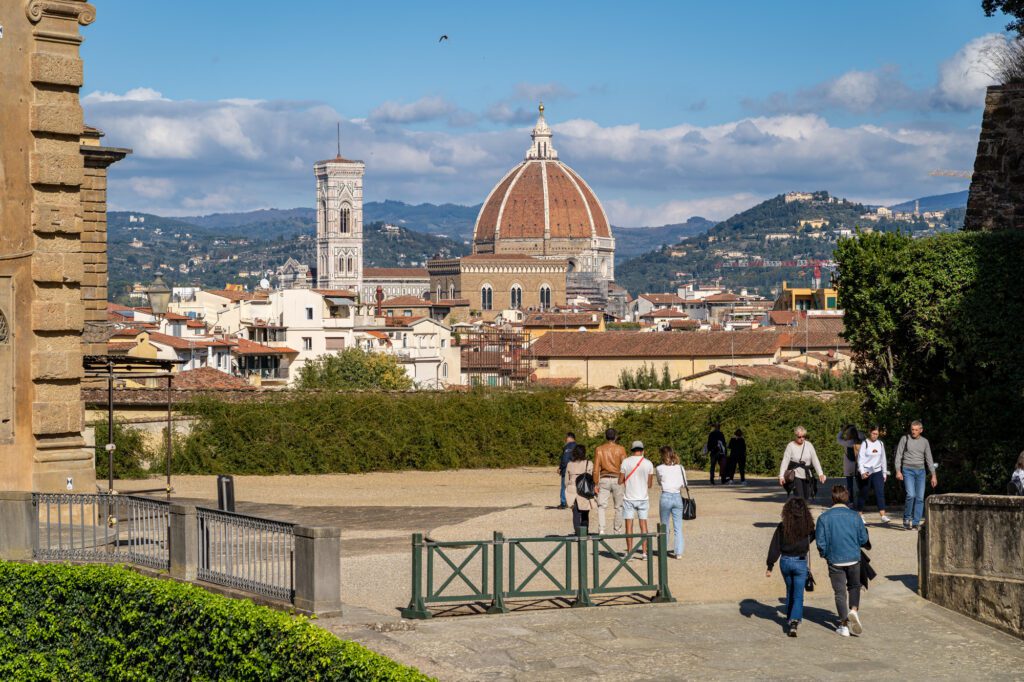
The complex across the river from the historic center that includes Palazzo Pitti and the Boboli Gardens served as the residence of the Grand Dukes of Tuscany (read: the Medici family).
The center of political life at that time – which revolved around the Medici – was the Palazzo Vecchio (on Piazza della Signoria), and the Medici had the Vasari Corridor built above Ponte Vecchio and through the building that is the Uffizi Gallery today to connect the two. God forbid you have to walk the streets with the people!
Today, Pitti Palace is a series of galleries housed inside that grand 15th Century Renaissance palace.
Exploring the numerous galleries is a great way to spend a rainy day in Florence, but we’ve never actually done it because we’re not super into wandering through palaces (once you’ve seen one, you’ve seen around 80% of them).
While we decided to skip the Palazzo Pitti after hearing from a local that it wasn’t particularly well organized (and that we should focus on the Uffizi and Accademia instead), we did do the Boboli Gardens and enjoyed our hour spent wandering the grounds of the former Medici Palace.
As soon as you enter the gardens, you’re met with one of the best views in the entire city, with the Duomo and the center of Florence off in the distance. Not a bad view for the richest family in the city to enjoy from their palace.
As far as your route goes, we’d definitely recommend including the botanical garden, the fountain of Neptune, and the Fontana dell’Oceano.
As you enter the gardens, we’d head off to the right towards the botanical garden, down to the Fontana dell’Oceano, and then around the back of the gardens to see the Fountain of Neptune from above. Something like this, roughly.
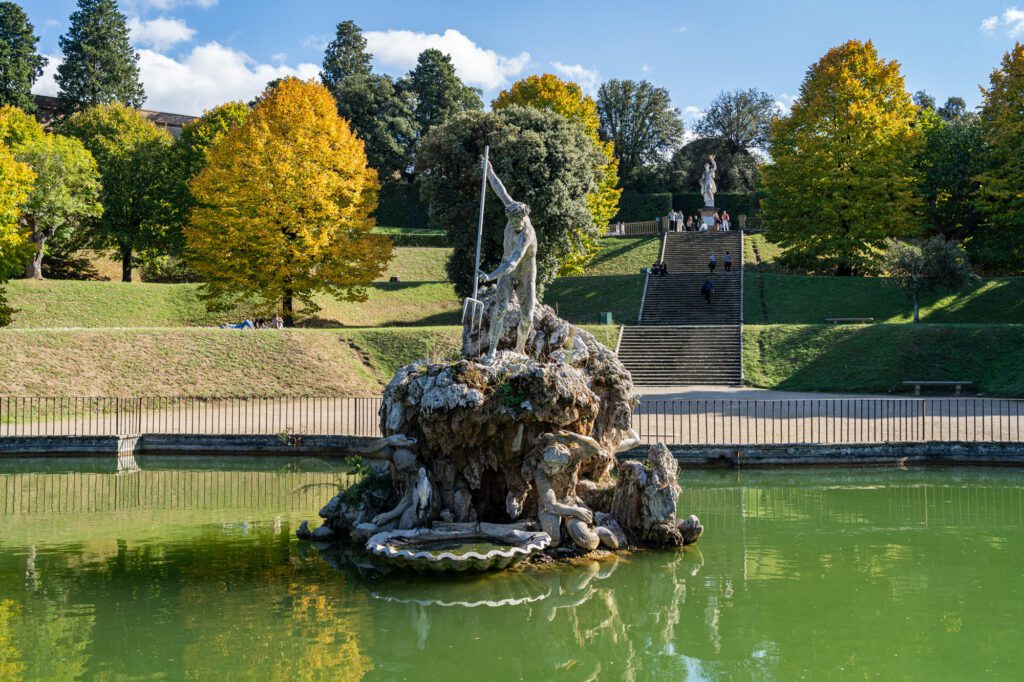
Note: The entrance to the gardens is the same as the entrance to Pitti Palace (here on Google Maps). If you’re looking at Pitti Palace, the ticket office is off to the right.
Get your tickets in advance – the ticket line can be very, very long, and you get to skip right to the front if you already have tickets.
You will still need to exchange your electronic tickets for paper tickets, though, which surprised us.
Again, though, you skip the line, show a barcode, and off you go! Learn more and get tickets here.
Take a Day Trip (Spoiler: There’s a Bunch of Them!)
One of the reasons we love Florence and recommend spending more than a day or two in the city is that it’s an excellent home base for exploring Tuscany and even parts of Emilia Romagna (which is just north of Tuscany and is the best food region in Italy, we think).
We think the city of Florence itself is worth AT LEAST two full days. Depending on how much time you have, you can add one or two other day trips to your itinerary to see other parts of Italy without having to pack up and move all the time (which sucks).
In this section, we’re going to give you four of our favorite day trip destinations that are an easy train ride from the city, with a brief overview of what we like about them and who should choose that particular destination.
We have an entire guide dedicated to laying out our favorite day trips from Florence, which you should go read for more detail behind these recommendations.
One thing you should know here: there are a bunch of places that are accessible within 90 minutes of Florence by train, but that list expands exponentially if you have a car.
However, we generally don’t recommend renting a car while you’re in Florence because parking and driving is a nightmare.
One recommendation for you if you want to get to some of those places that are only accessible by car is this tour with Walks of Italy, our favorite tour company in Italy.
We’ve done six or seven tours with them in Italy at the time of writing, and they have ranged from really good to borderline life-changing.
It’s a long day and it’s more expensive than choosing one of the options below, but it covers a lot of ground that you would be hard-pressed to cover on your own.
Head Up to Piazzale Michelangelo (+ an Even Better View)
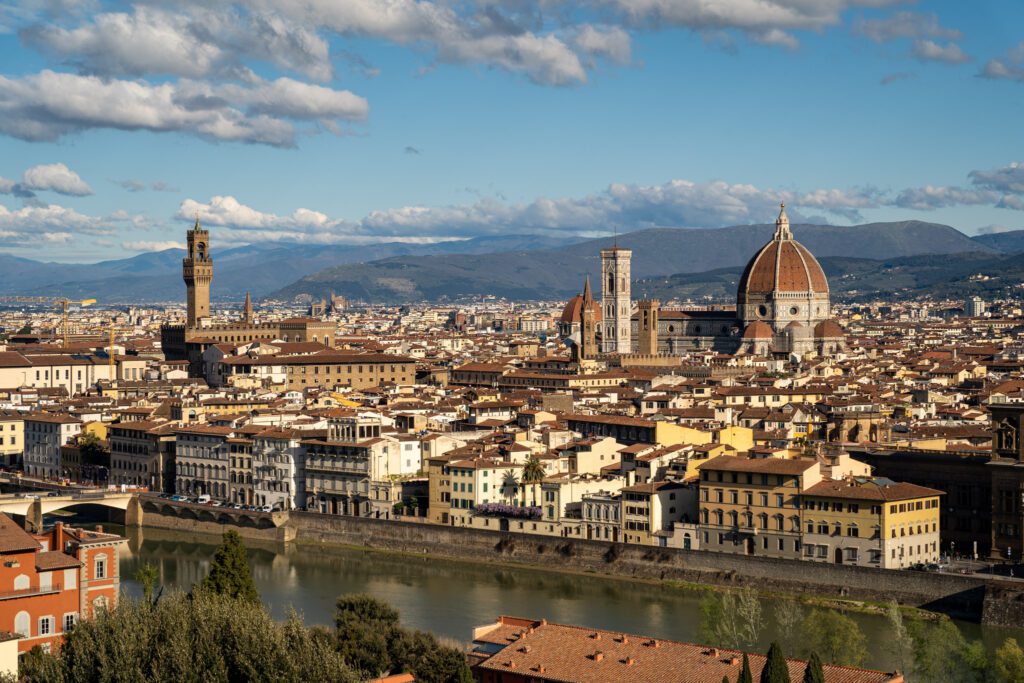
First of all, a visit to Piazzale Michelangelo should absolutely be on your visit to the other side of the river, which we already covered above.
Second of all, we think this view is better than the view from the top of the Duomo – which is also amazing – because it includes… the Duomo.
From Piazzale Michelangelo, which is up on the hill across the Arno from Santa Croce, you get a sweeping view out over the city of Florence that includes the Duomo, Palazzo Vecchio, and Ponte Vecchio.
It’s a nice walk up from the area around Piazza Santo Spirito, especially if you detour through the Giardino Bardini and Giardino delle Rose to stop to smell the roses (if they’re blooming).
The view is spectacular, which is why it’s also insanely popular. At sunset, hundreds and hundreds of people flock to this viewpoint.
Which is exactly why we’d like to suggest an alternative: the early morning visit.
First, the crowds will be much, much thinner.
You’ll have the place mostly to yourself, with a few other early risers and likely some runners who have this view as part of their daily route.
Second, the light can actually be better in the morning. Depending on the time of year, sunset could mean that you’re facing the sun, which makes getting spectacular pictures fairly difficult.
In the morning, the sun will be coming over your shoulder, illuminating the Duomo and Florence skyline, which makes for much better pictures.
However, the vast, vast majority of people get to Piazzale Michelangelo and stop there.
We actually think it’s worth going about five minutes further up the hill to both escape the crowds and get an even better view (maybe not “better”, maybe just “different”) view from the Abbazia di San Miniato al Monte, the big 11th Century church on the hill (here on Google Maps).
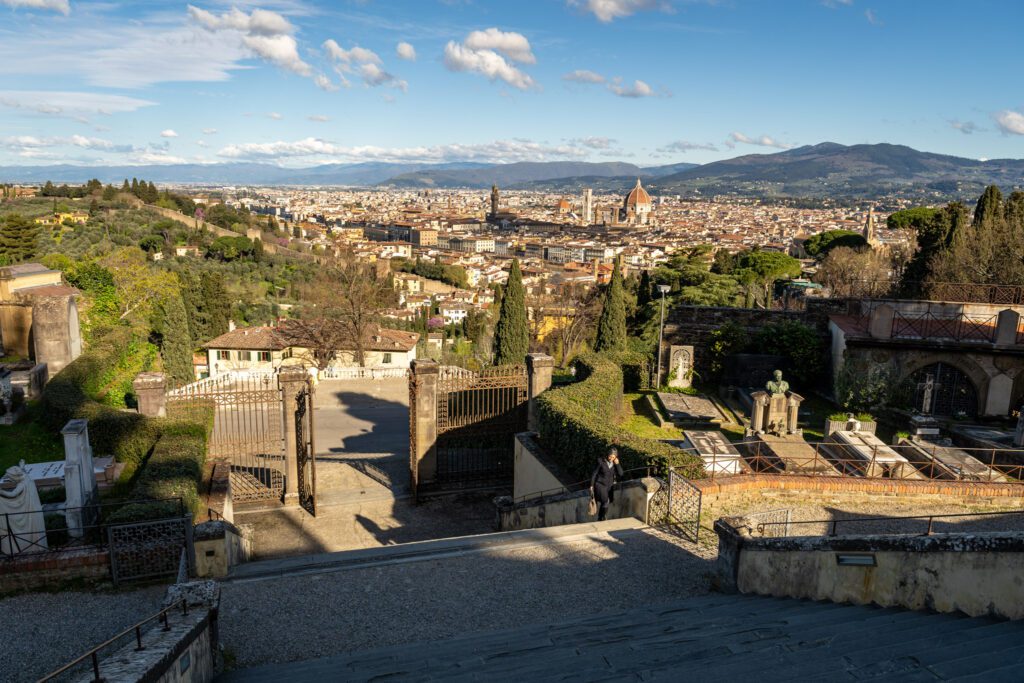
Depending on when exactly you’re here, it’s worth poking around at the top of the staircase leading up to the facade of the church, where there are some cool views back over the cemetery with Florence in the distance.
However, the gates close well before sunset for most of the year, so you might have to settle for the view from the terrace at the base of those stairs.
On your way back down, head past the Porta San Niccolò and admire the beautiful fountains and grottos built into the side of the hill.
Bologna (For the Food)
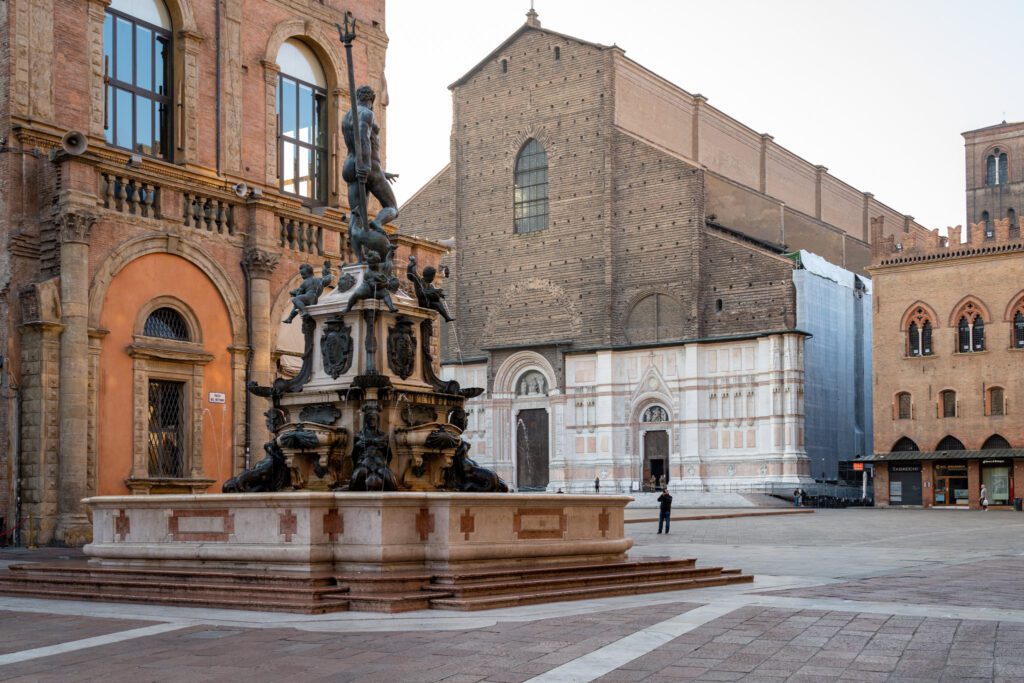
If you’ve ever talked to us in real life and asked us about Italy, there’s a 97% chance we’ve waxed lyrical about how Bologna is our favorite city in Italy.
After a few trips, first to see friends (which is what originally put the city on the map for us), then to dive a bit deeper, we’ve fallen head over heels in love.
To the point where Matt, a huge soccer nerd, has adopted Bologna as his European team of choice and can be found on weekend mornings watching Bologna’s football (soccer) team playing.
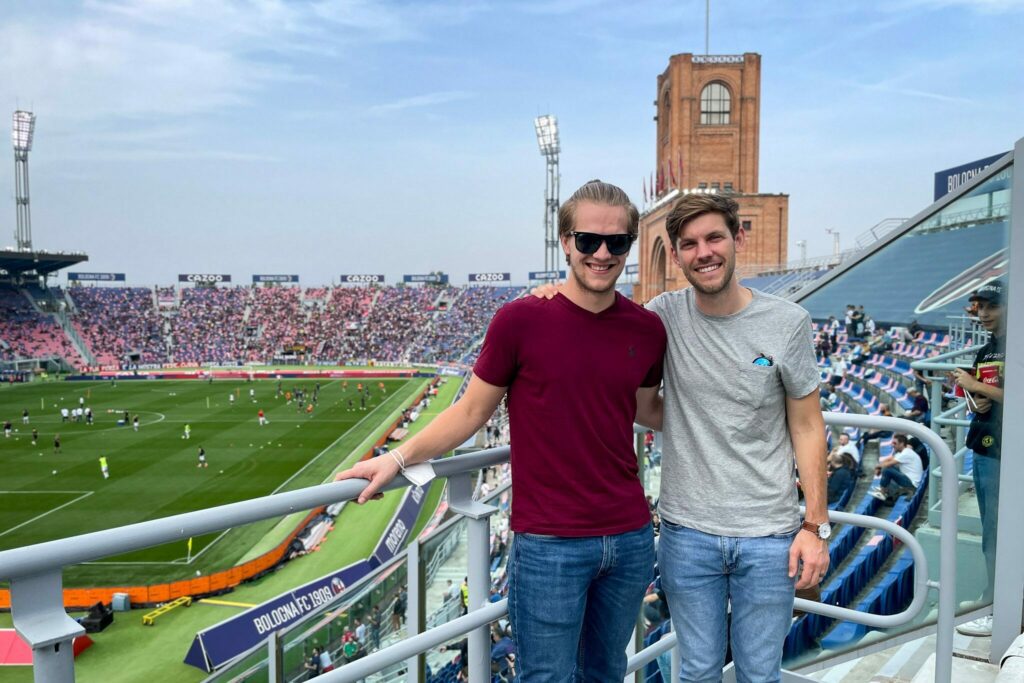
Bologna is the capital of Emilia Romagna, which is a region of Italy that is known for its food.
Many Italian ingredients that you think of come from this part of Italy, including parmigiano-reggiano, prosciutto di Parma, balsamic vinegar of Modena, mortadella, and plenty more.
Plus, all the filled pasta – tortellini, tortelloni, and beyond.
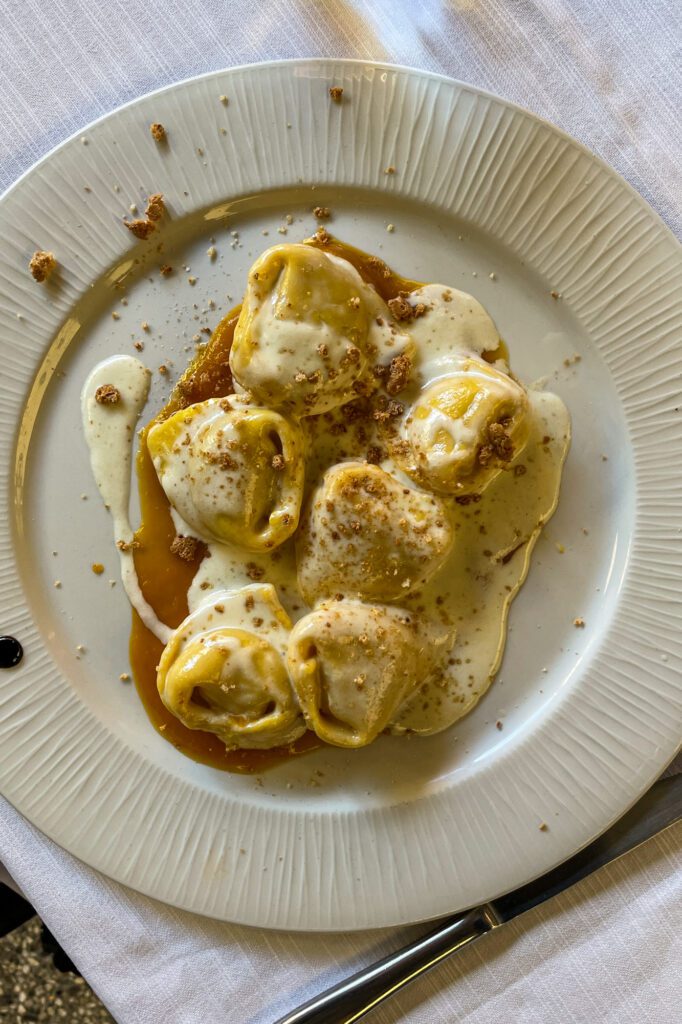

The food scene here is full of bangers, and we’d do your best to do a food tour while you’re there if you can to get a taste for it in a limited amount of time.
For what it’s worth, this is the food tour we’d choose (though gluten-filled food tours aren’t our thing for obvious reasons).
Food aside, there are two other reasons why we love Bologna.
First is the fact that it’s a real life city where people actually live.
Places like Florence, Cinque Terre, Venice, and Rome’s historic center have been somewhat hollowed out by decades of being some of the most visited places in the world (and lack of government intervention to prevent some of the negative aspects of tourism).
In Bologna, you tend to see a higher proportion of locals going about their day in Bologna than you do in Italy’s major cities. And many of the tourists you do see are actually Italians visiting.
Second is the fact that, at its core, Bologna is a college town.
One of the oldest and largest universities in the world is here, and the student population is immediately visible and notable.
There’s a certain youthful energy that comes with a city that’s centered around a university, and it’s a vibe we love.
Anyway, the point is that you should go to Bologna if you love food. It’s a quick 45 minute high speed train ride away from Florence’s Santa Maria Novella, so it’s also the easiest trip here.
We have an entire guide dedicated to spending a day in bologna, which you should read for more information and detail.
Siena (For the Tuscany Vibes)
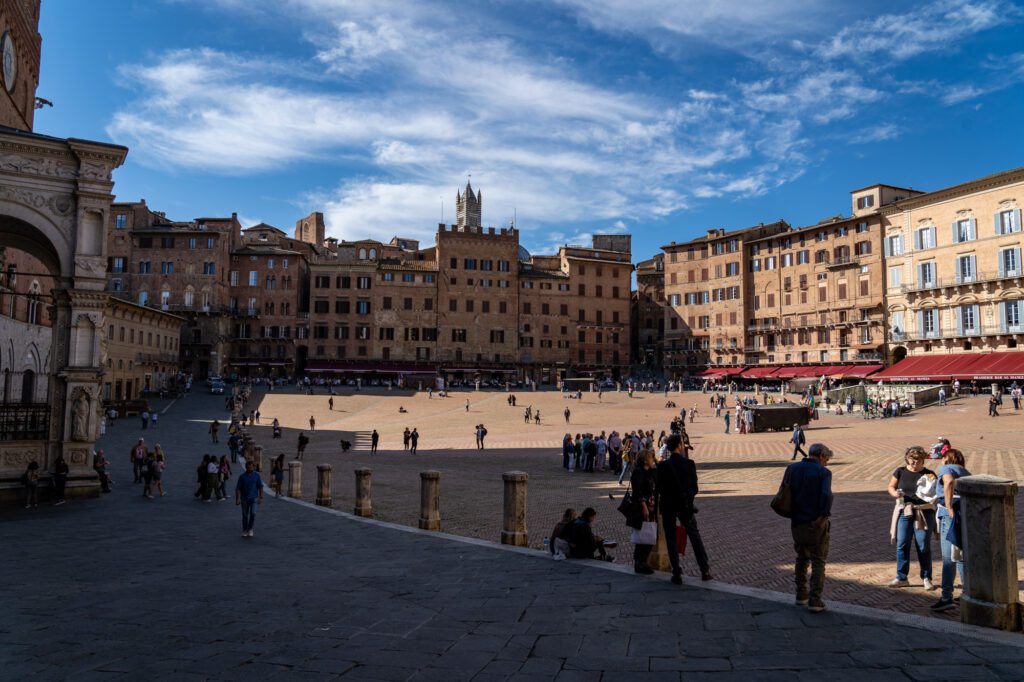
A few years ago, my mom and I did a Tuscany road trip together that took us to the region south of Florence to explore.
One of the things we loved about Tuscany is the hilltop towns that dot the landscape. Built centuries ago, the walled hilltop towns were built for visibility and defensibility, and they are uber romantic to experience.
Unfortunately, many of those smaller hilltop towns aren’t super accessible without a car, but we have some great news: there is perhaps no better example of a hilltop town than Siena, and it’s easily accessible from Florence by train.
We spent three days in and around Siena on that trip, and it’s a great city.
Beautiful views await you around every corner, the cathedral is gorgeous (particularly the mosaics on the floor), and there are some great Sienese eats to be had around town.
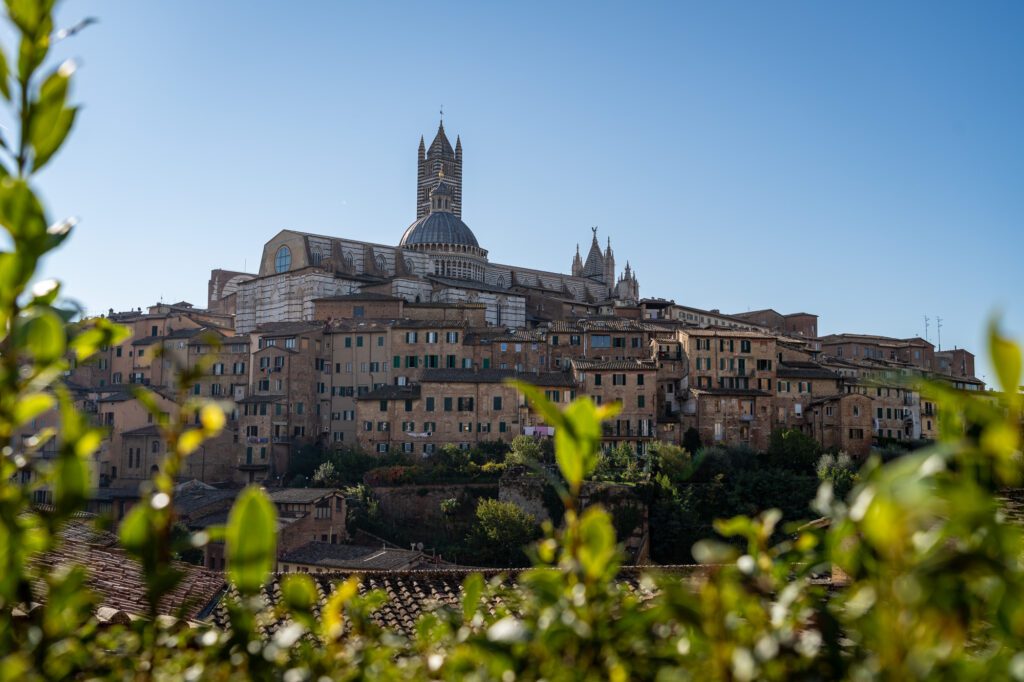
Here are a few things to do and see in Siena that we’ve enjoyed.
The Duomo di Siena: The Duomo di Siena is an impressive work of art, particularly the beautiful mosaics on the floor, which we were lucky enough to see on a recent trip (they’re often covered up). It’s similar to the Duomo you’ve already seen in Florence, but we’d argue that this is more opulent than that one (especially the interior). Buy tickets here.
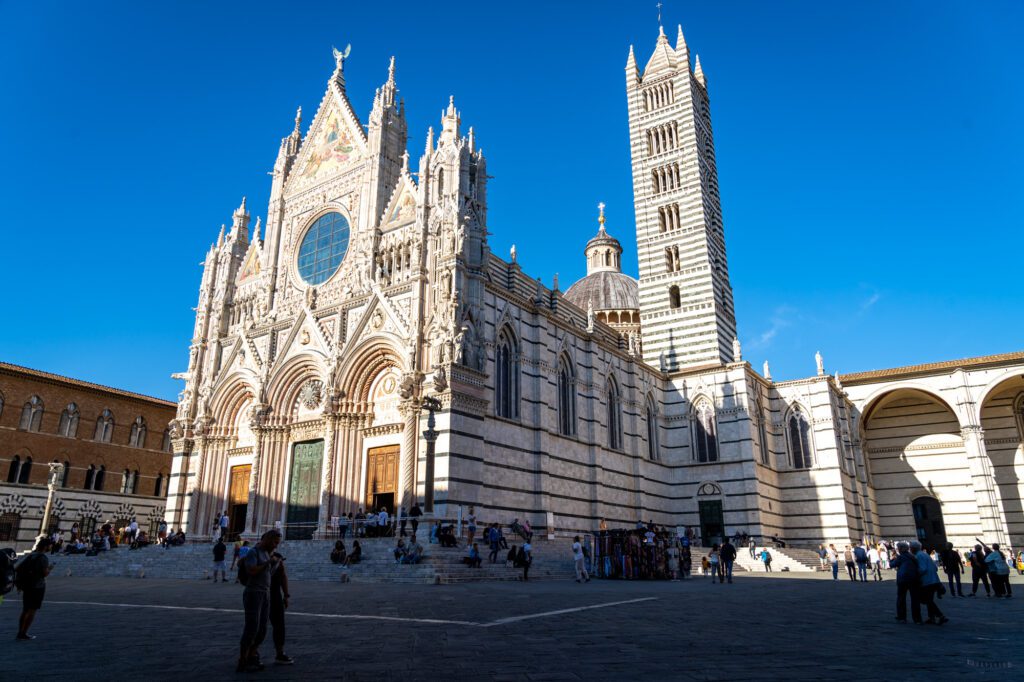
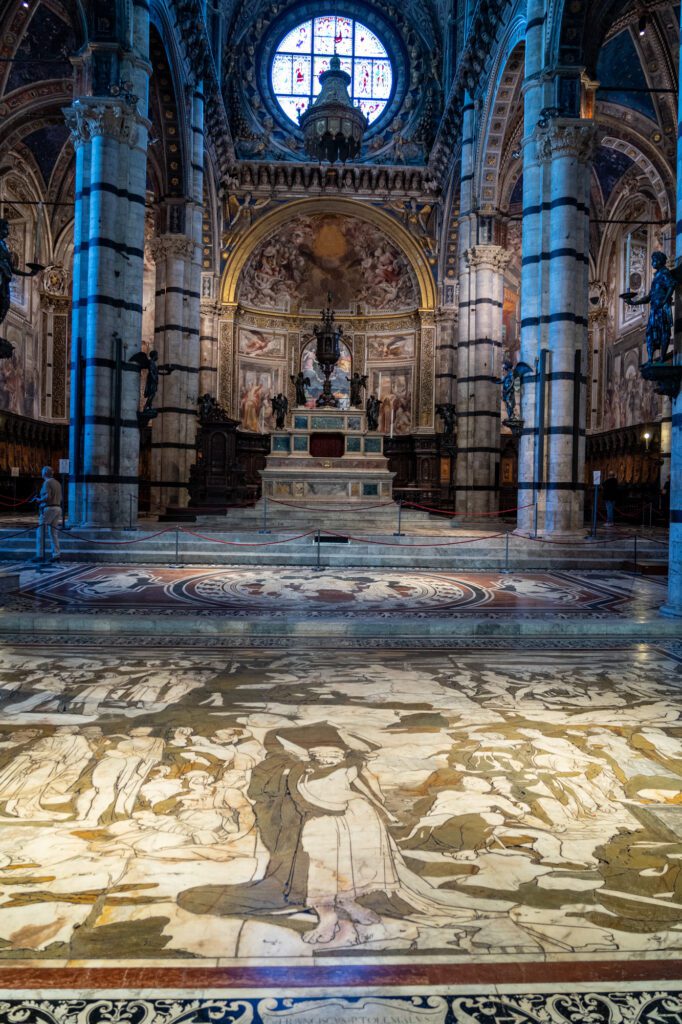
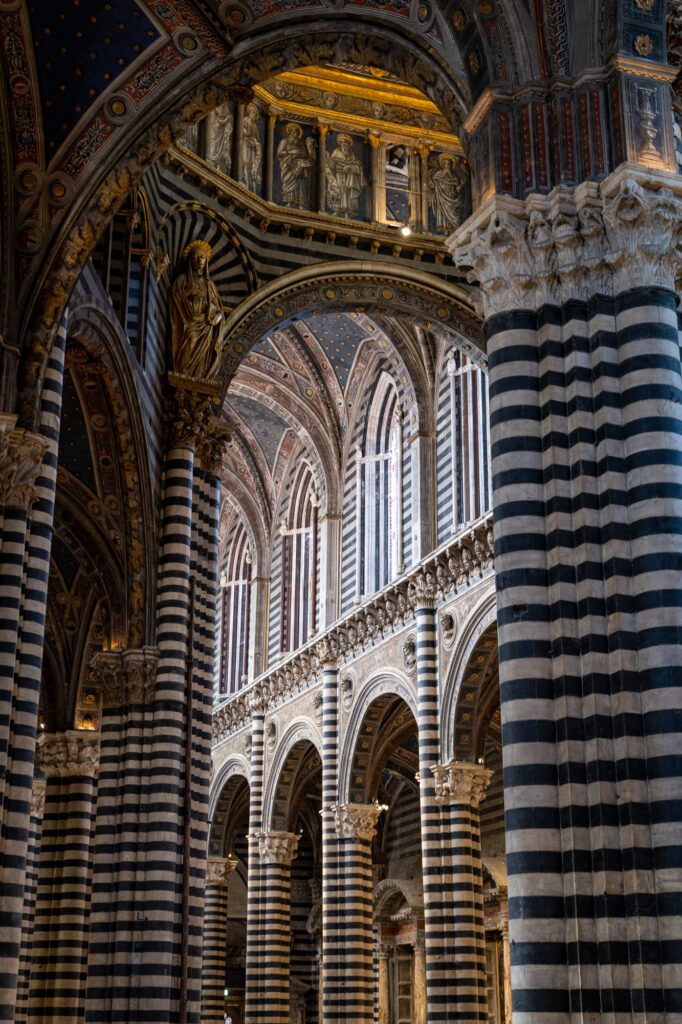
Take a Walking Tour: Siena is a city with a long and interesting history. And a great way to learn about it is on a guided walking tour with a local guide.
We did this tour and it was an excellent introduction to Sienese history and culture. It even included a visit to the cathedral, which is a fascinating place to explore with a guide who can teach you about the architectural elements and historic artwork.
Marvel at Piazza del Campo: Piazza del Campo is the main square of the city, and is the place where the world-famous Palio di Siena – a horse race that has been taking place in Siena for hundreds of years.
The square is impressive, and it is worth stepping into the Palazzo Pubblico to learn about Siena’s governance when it was independent and marvel at the art on display.
Eat your way through Siena: Siena’s cuisine is similar to that of Florence, with some slight twists.
Definitely head to Torrefazione Fiorella (here on Google Maps) for the experience of rich espresso at a bustling bar full of people speaking Italian.
One of the owners of the agriturismo I stayed at a few years ago STRONGLY recommended Du’ Cose da Berna, a sandwich shop in the center of Siena, for lunch (with La Prosciutteria as a second option).
For dessert, head up to Panificio Il Magnifico for their ricciarelli, a typical Sienese cookie (among other types of biscotti and various baked goods).
Chianti (For the Wine)
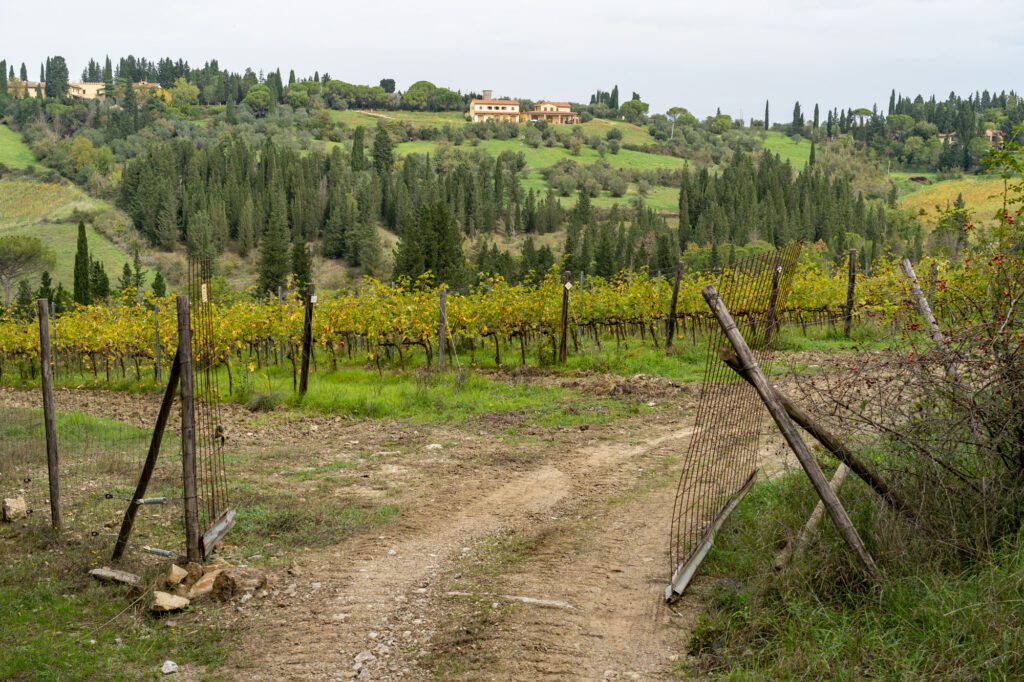
Chianti – specifically, Chianti Classico – is one of the most famous wine regions in the world, and is associated with the D.O.C.G. and the black rooster sticker on the label.
For reference, D.O.C.G. is just a classification that means a product is made in a specific place in a specific way that is regulated to guarantee the quality of the resulting product.
It’s a common way to classify wines and other food products in Italy and broader Europe (balsamic vinegar di Modena, prosecco, and champagne are all examples).
The region is easily accessed from Florence, and is only about 30-45 minutes outside of the city depending on where exactly we’re talking about.
As of my latest trip to Florence this past spring, I have now done Chianti twice. Once as part of that road trip, when we had a car and were able to make our way around independently, and once as a day trip from Florence without a car.
You essentially have two options if you want to get out to Chianti. You can either rent a car and drive yourself or you can take a guided tour from Florence that includes transportation.
There are obviously pros and cons for each approach, and we’d argue that, based on our experience, the best way to experience the wines of Chianti is on a wine tour that leaves from Florence and includes transportation so that you can both enjoy the wine tasting without worrying about driving, and not have to deal with a car in Florence.
In terms of guided tours, you have two options. You can either choose a tour that goes deep on a single winery, usually including a cellar tour and detailed tasting (but you’ll have to make your way out to the winery), or a tour that takes you around to multiple wineries.
Lucky for you, over the course of several trips to Florence and a trip to broader Tuscany, we’ve done it both ways, and have thoughts.
Generally, we think the best version of a Chianti wine tour involves multiple winery stops and a nice, leisurely lunch to break them up. As you might imagine, that also is typically a more expensive way to do things.
On every trip, there’s usually one experience that stands out in our minds as THE experience of the trip.
A few years ago, we spent some time in Portugal and did a wine tour of the Douro Valley that we still talk about as one of the best tours we’ve ever done, period (and we’ve sent multiple friends and family on the exact same tour).
At the time I booked that tour, I said “this is kind of expensive, but it seems like it’s actually a good value considering what you get.”
The reason I’m bringing up that tour in Portugal? The tour I (Matt) did with my family on my latest trip to Florence was equally good (and I had the same budget question before doing it).
If you’re looking for an excellent all day wine experience that includes transportation, multiple winery stops, and a beautiful lunch (more on lunch in a second), we can’t recommend this tour of Chianti more highly.
It’s also a tiny group – a maximum of 8 people – which is almost the best part (we love small groups!).
It also includes lunch at a famous butcher – Dario Cecchini’s spot in the tiny town of Panzano – which was…an experience.
Dario is an eighth generation butcher with a handlebar mustache and a cult following, and we had NO IDEA what we were getting ourselves into.
There were trumpets playing (by Dario himself) to open the restaurant, excellent wine, and course after course of meat-focused dishes (one of which was among the best things we ate in Italy on that trip).
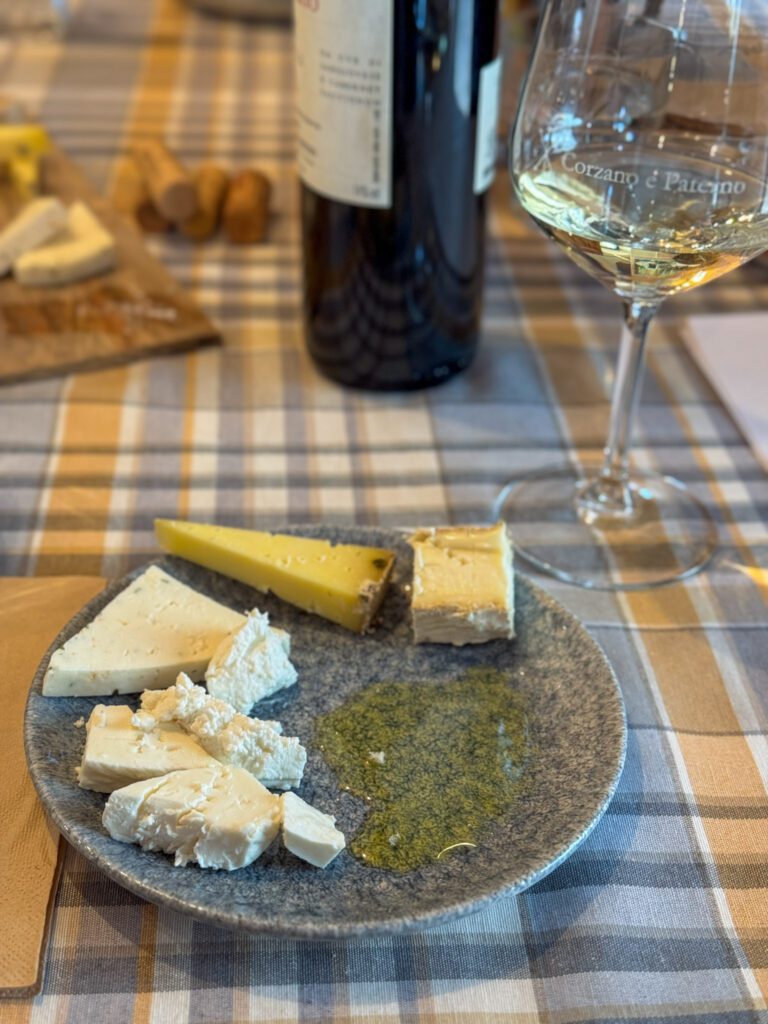
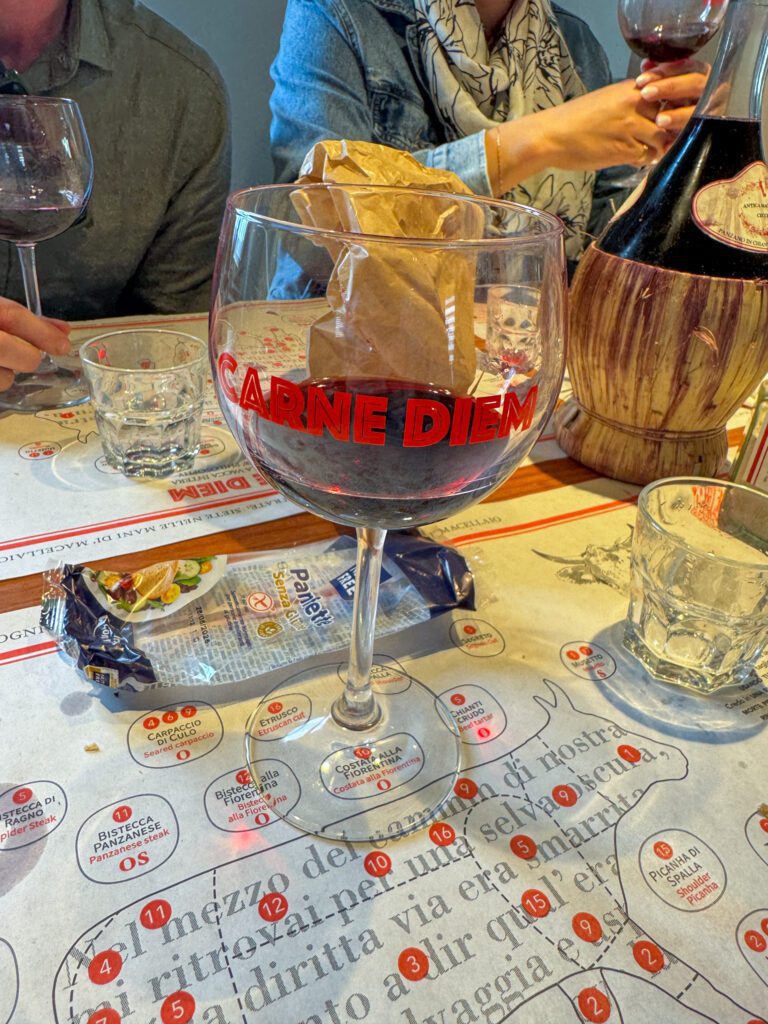
One note: Not a great option for vegetarians – they have another tour that focuses more on cheese that might be a better option if you don’t eat meat.
This other Chianti tour – which they call a safari because it’s done in a 4×4 vehicle – was the other option that I had on my list, but I ultimately went with the other tour for gluten free reasons (they were more than happy to accommodate me, which I appreciated, though I never asked this second company).
You could also do it independently if you have a rental car, but, it’s going to be a much more enjoyable experience with a group tour where you have a driver so you can imbibe in all the amazing wine without worrying about getting behind the wheel, and you’ll get to meet other like-minded travelers along the way.
On a trip to Tuscany a few years ago for my mom’s 60th birthday, we also did this great winery tour, which focuses on a single, tiny winery (and requires you to get yourself there).
Planning a trip to Italy? We’d love to help!
Here are our other Italy travel guides to help you plan an incredible trip (even if you have to eat gluten free!).
If there’s no link below, it means we’re still working on it – long, in-depth guides take time! We’re working on it, though, we promise.
If you’re planning a trip and you’re not sure where to start, your first stop should probably be one of our detailed itineraries.
We have a two week Italy itinerary that blends the main cities with some less-visited cities that we love (BOLOGNA!), a guide to spending 10 days in Italy that focuses mostly on the highlights, and a whirlwind guide to spending one week in Italy that features the Rome – Florence – Venice highlight circuit.
We also have a guide covering important tips for traveling to Italy for the first time, which is a collection of things we’ve learned over the course of our time in Italy that will help you have a smoother, more immersive trip.
Here are more specific guides to the main cities in Italy.
Rome
- What to do in Rome (as a First Timer)
- How to Plan an Amazing 4 Day Rome Itinerary
- Where to Stay in Rome: A Complete Guide for First Timers
- 26 Things to Know Before You Visit Rome
- Gluten Free Rome: A Complete Guide to GF Restaurants + Bakeries
- Where to Find the Best Specialty Coffee in Rome
Florence
- What to do in Florence (as a First Timer)
- How to Plan an Amazing Florence Itinerary (3 Days)
- Where to Stay in Florence: A Complete Guide for First Timers
- Gluten Free Florence: A Complete Guide to GF Restaurants + Bakeries
- Where to Find the Best Specialty Coffee in Florence (for Coffee Nerds)
- The Best Day Trips from Florence (Complete Planning Guide)
Venice
- A Perfect 3 Day Venice Itinerary (for First Timers)
- Exactly What to Do in Venice (As a First Timer)
- Where to Stay in Venice: A Complete Guide
- Gluten Free Venice: A Complete Guide (for Foodies)
Bologna
- What to do in Bologna (as a First Timer)
- How to Spend One Incredible Day in Bologna
- How to Plan an Amazing Bologna Itinerary (2 Days)
- Where to Stay in Bologna: A Complete Guide for First Timers
Cinque Terre
- What to do in Cinque Terre (as a First Timer)
- How to Plan an Amazing Cinque Terre Itinerary (2 Days)
- Where to Stay in Cinque Terre: A Complete Guide for First Timers
Milan
- What to do in Milan (as a First Timer)
- How to Plan an Amazing Milan Itinerary (2 Days)
- Where to Stay in Milan: A Complete Guide for First Timers
- Gluten Free Milan: A Complete Guide to GF Restaurants + Bakeries
The Rest of Italy
